
Imagine that you have a great store, but it’s hidden in a place where no one can find it. It’s a bit like a site that is not optimized for search engines.
The page SEO (ON-PAGE SEO) is the key to changing this situation and ensuring that your site becomes the main attraction on the Internet.
Whether you are an experienced marketer or a beginner, this article is designed to give you an in-depth understanding of page SEO technologies and how they can benefit your site.
At the end of this guide, you will have all the knowledge you need to effectively optimize web pages and improve search engine rankings. You will learn:
- How to optimize your content
- How to create a SEO-friendly URL
- How to write title and description
- There’s more.
What is page search engine optimization (On-Page SEO)
Page SEO (On-Page SEO), also known as on-site SEO, is like the star quality that makes your site shine on the Internet stage.
This is about making your site both search engine and user friendly.
Page SEO includes all the technologies that are applied directly to web pages to ensure prominence on the search engine results page (SERP). However, it’s not just about achieving high rankings; it’s about doing it effectively.
This is to improve the overall quality of the page through the strategic integration of content and technical elements. In other words, the more SEO you adjust to the page, the more traffic your site will attract and the more traffic will be consistent with your content.
There are many aspects of using page SEO to optimize a web page, which we will discuss later. These optimizations help improve page ranking, including:
- Improve the quality of content and effectively attract and inform visitors.
- Fine-tune the technical elements on the page to make your page easier to access and attract search engines and users.
In short, the page SEO includes fine-tuning the visible and behind-the-scenes parts of the site to improve its search engine rankings and attract new traffic.
The importance of On-Page SEO
On-Page SEO can help search engines like Google find your site easily. Just as logos can help people find the exact way, page SEO can help search engines find your site.
Users of online search queries usually click on the first few results. A study by Sistrix found that the average click-through rate for the first organic result in Google search was an impressive 28.5%. By contrast, click-through rates in the second and third positions were 15% and 11%, respectively.
On-Page SEO can help your site reach the top, which means that more users will visit your site.
How to execute On-Page SEO
Now that you know the page SEO, it’s important to understand that it’s not just about getting users to visit your site; it’s about keeping them there.
So let’s talk about how to execute SEO on the page and get to the top of the search engine.

- Chapter 1: the basics of page search engine optimization
- Chapter 2: optimize your SEO content
- Chapter 3: optimize title and description tags
- Chapter 4: write SEO content
- Chapter 5: optimize click-through rate
- Chapter 6: page user experience signal
- Chapter 7: advanced page search engine optimization techniques
Chapter 1: the basics of page search engine optimization
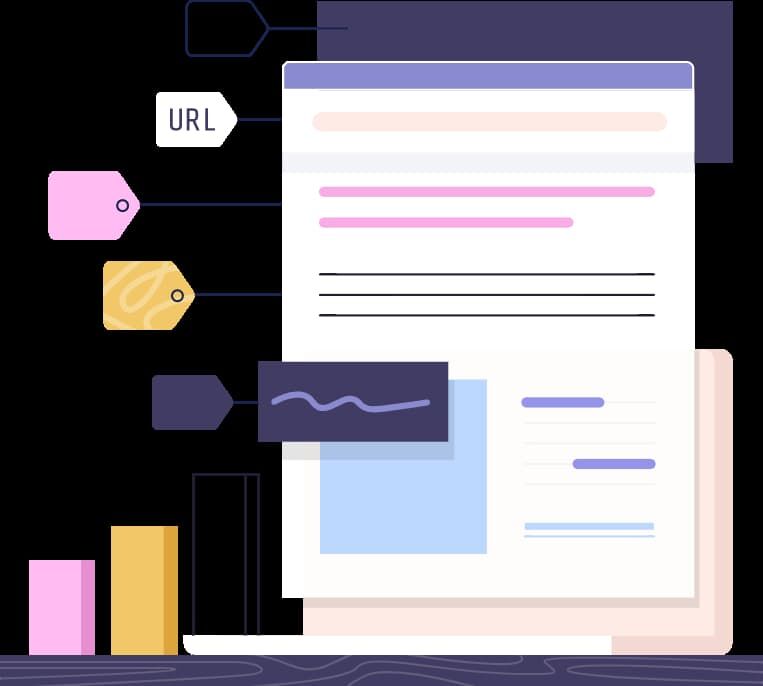
What is page search engine optimization?
On-page SEO (also known as “on-site SEO”) is a practice of optimizing web content for search engines and users. Common page search engine optimization practices include optimizing title tags, content, internal links, and URL.
Unlike off-page SEO, off-page SEO is optimized for signals that occur outside your site (for example, backlinks).
Why is page search engine optimization important?
Will traditional page search engine optimization still have an impact in recent years?
Right!
In fact, Google’s own “how search works” report points out:
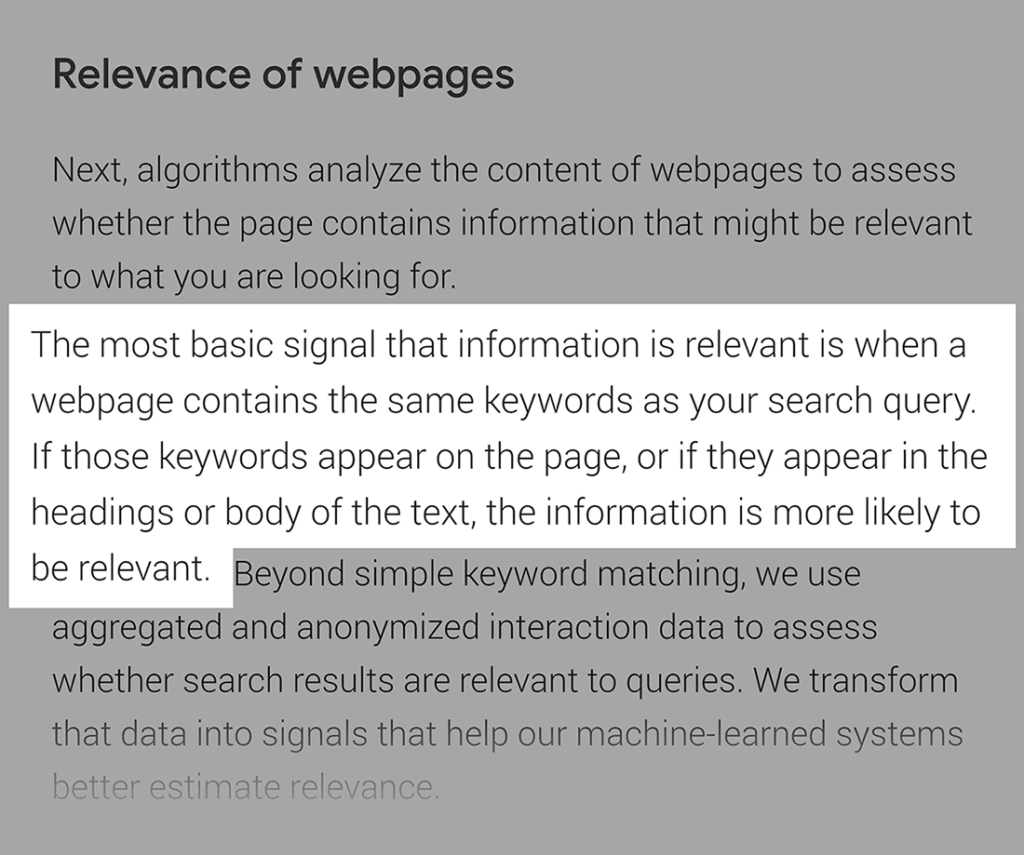
Although Google is much smarter than before, they still use old-fashioned things (such as looking for specific keywords on your page).

And there are data to support this.
Our analysis of 11 million Google search results found no correlation between keyword-rich title tags and home page rankings.
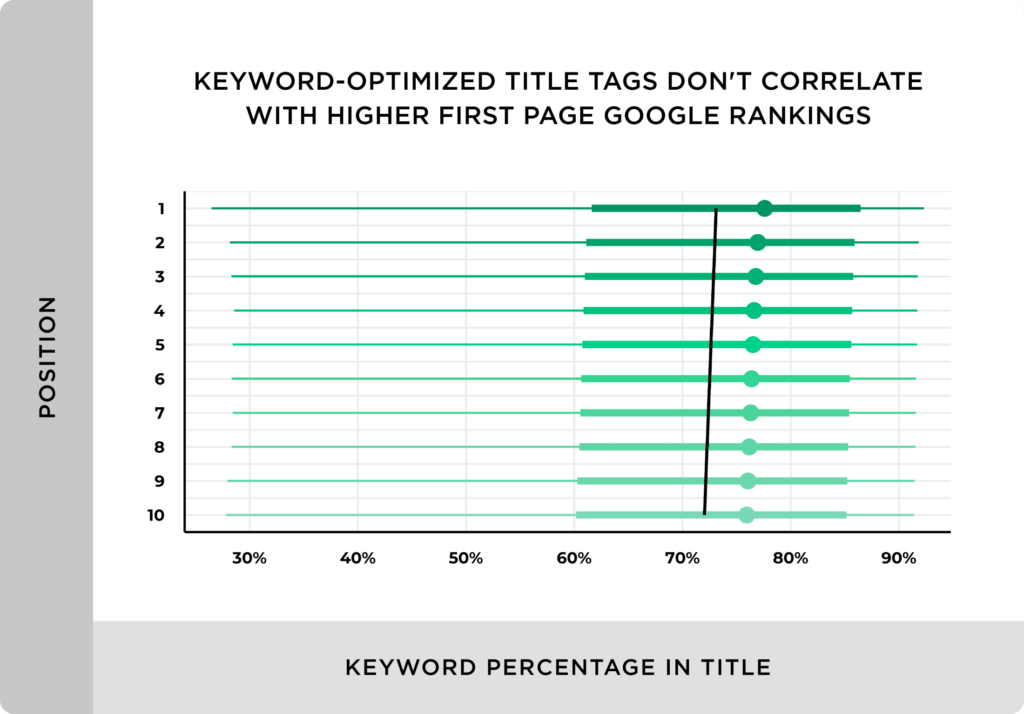
However, if you search for any competitive keyword, you will notice that almost all the top pages use that precise keyword in their title tags.
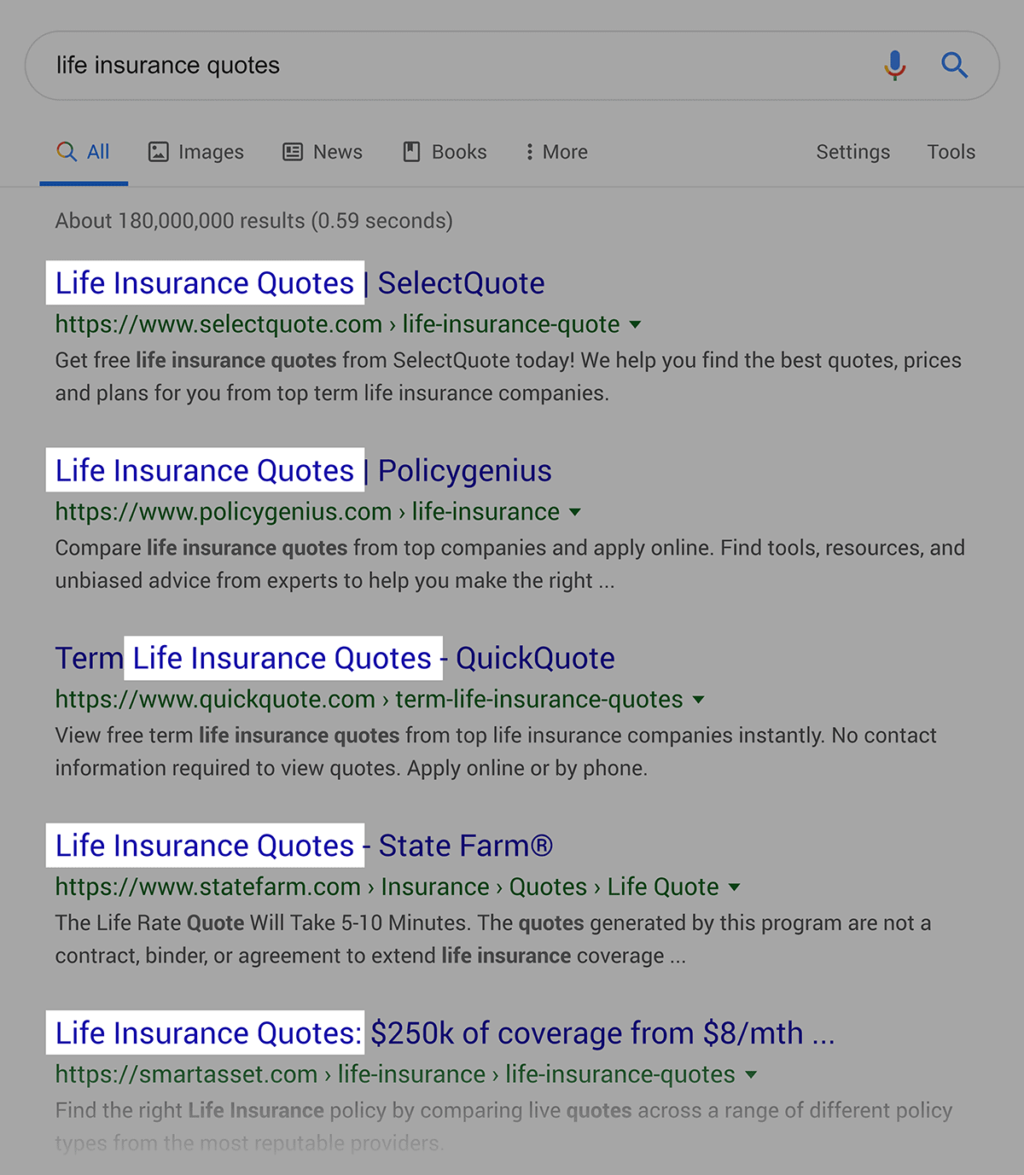
Then say:
The page SEO is not just about stuffing keywords into the HTML of the page.
To rank your content in 2022, you also need to optimize your content for the following:
- User experience
- Bounce rate and residence time
- Search intention
- Page loading speed
- Click rate
This leads us to Chapter 2.
Chapter 2: optimize your SEO content

Now that you understand why the SEO on the page is still important, it’s time to start optimizing your content.
Specifically, in this chapter, I’ll show you how to keyword optimize each page on your site.
So, if you’ve ever wondered, “how do I actually use keywords on a page?” You will enjoy the practical techniques in this chapter
Use target keywords in the first 100 words
This is an old-fashioned page search engine optimization strategy that will still make a difference.
All you need to do is use the main keyword once in the first 100-150 words of the article.
For example, in my article optimized around the keyword “email marketing”, I mentioned that keyword directly.
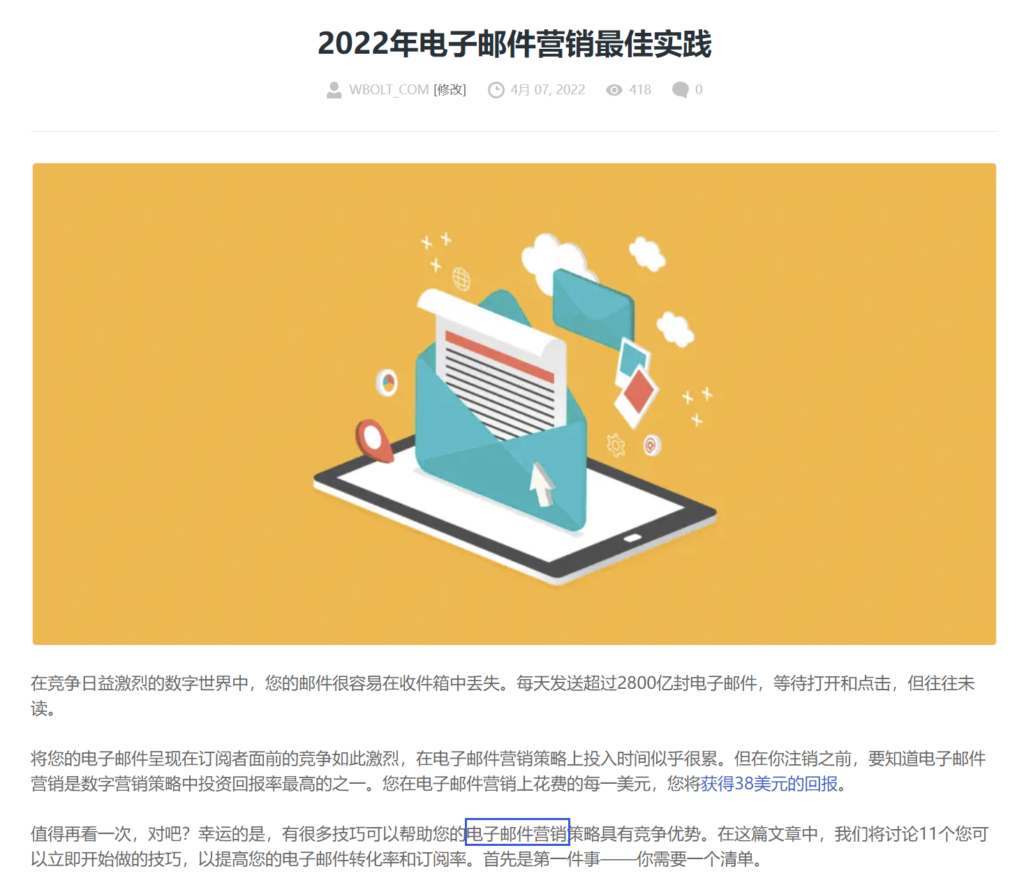
Why is this important?
Google pays more attention to the words that appear early on your page.
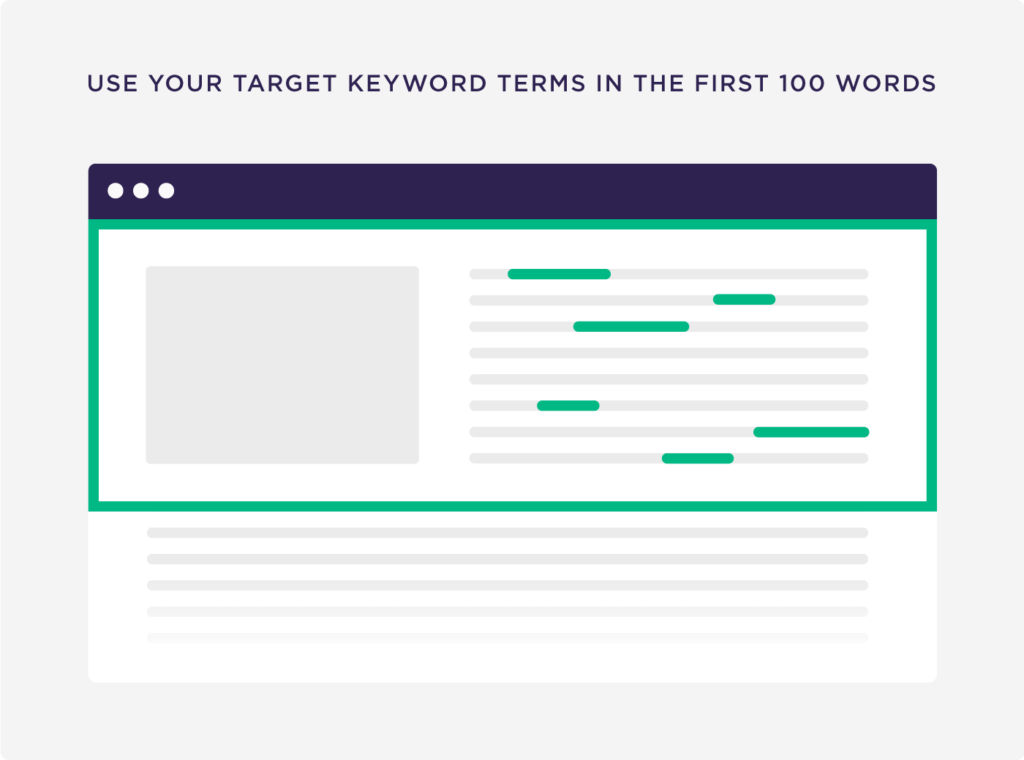
It makes sense. Imagine that you just published an article about Keto Diet. If your article is really about ketogenic diet, does it make sense to use the word “ketogenic diet” in the middle of the page first?
Of course not.
That’s why you put the keyword somewhere in the first 100 words or so. This is one of the little things that help Google understand the full content of your page.
Wrap the title of your blog post in the H1 tag
The H1 tag is like a mini title tag.
In fact, Google has stated that the use of H1 tags “helps Google understand the structure of the page.”
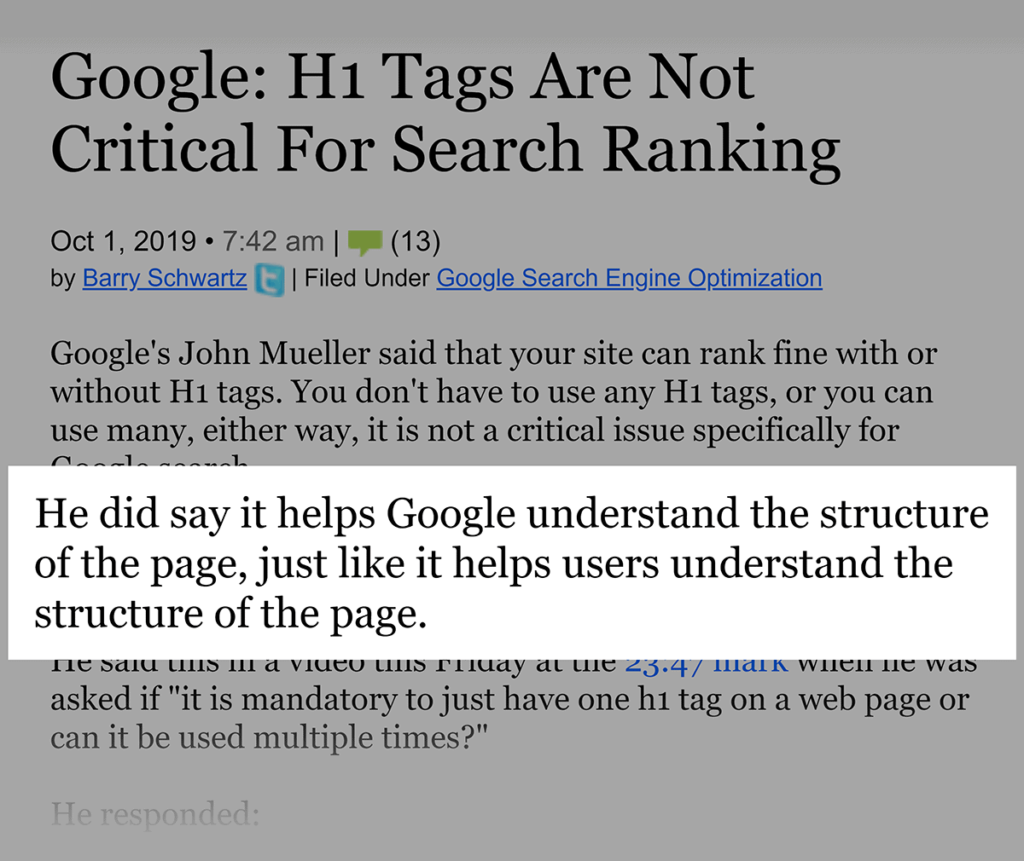
Most platforms, such as WordPress, automatically add H1 tags to the title of your blog article. If that’s the case, you’ll be all right.
But this is not always the case. You want to check the code of your website to make sure your title is included in H1. And your keyword is within the H1 tag.
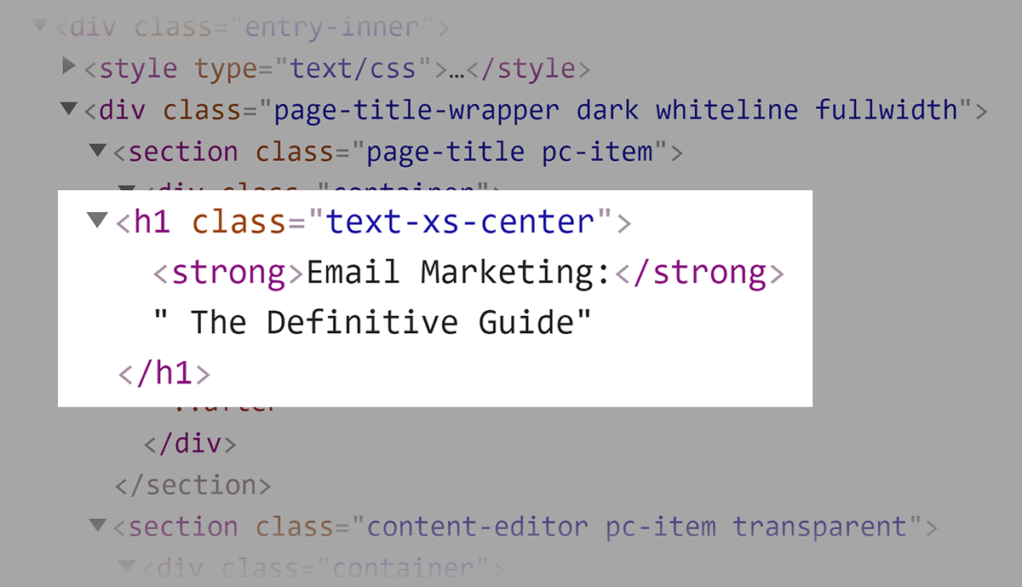
Package the subtitle in the H2 label
Include your target keyword in at least one subtitle. The subtitle is packaged in the H2 label.
Will H2 tags make or break your page SEO?
No. But it can’t afford to hurt. My own SEO experiments have shown that wrapping target keywords in H2 tags can have an impact.
This is an example of this strategy (target keyword = “content marketing tool”):
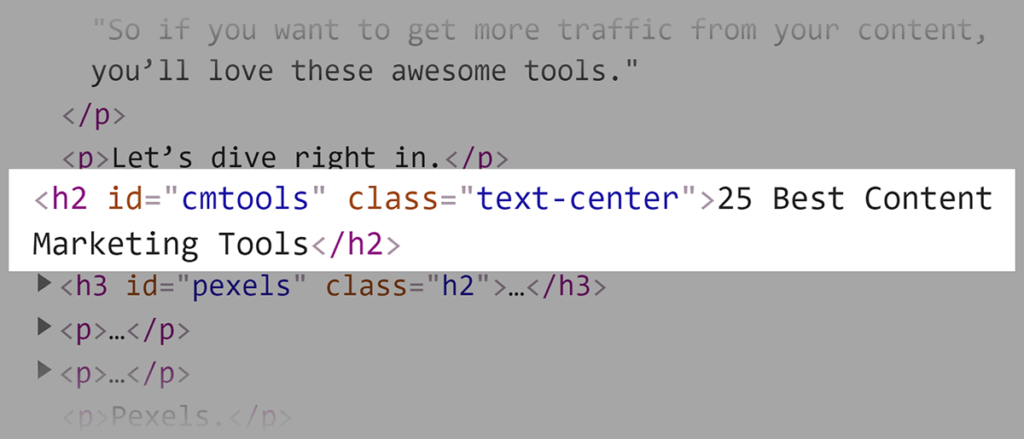
Keyword frequency
Keyword frequency is just as it sounds: it is the number of times your keyword appears in your content.
Google may deny that it is helpful to use the same keywords many times. But experienced SEO experts will tell you that it is absolutely effective.
Think of it this way:
Imagine that you have a page that Google thinks is about specific keywords. However, the keyword appears only once on the page.
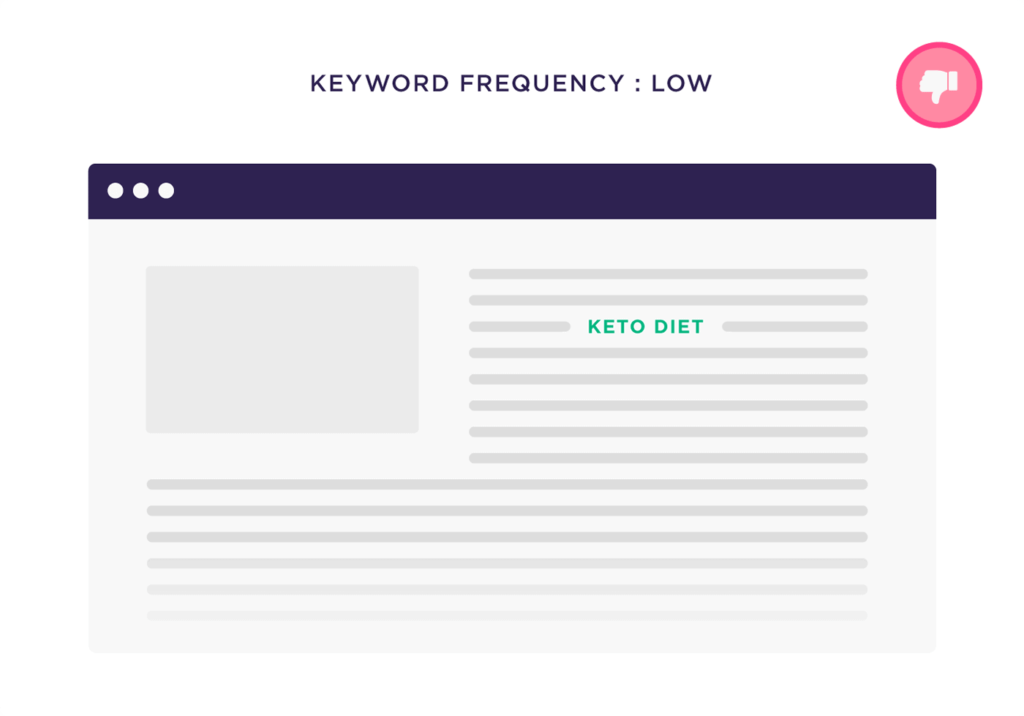
How confident are they that the page is related to the keyword? It’s not special.
On the other hand, if the page mentions the keyword 10 times, Google can be more confident about the theme of the page.
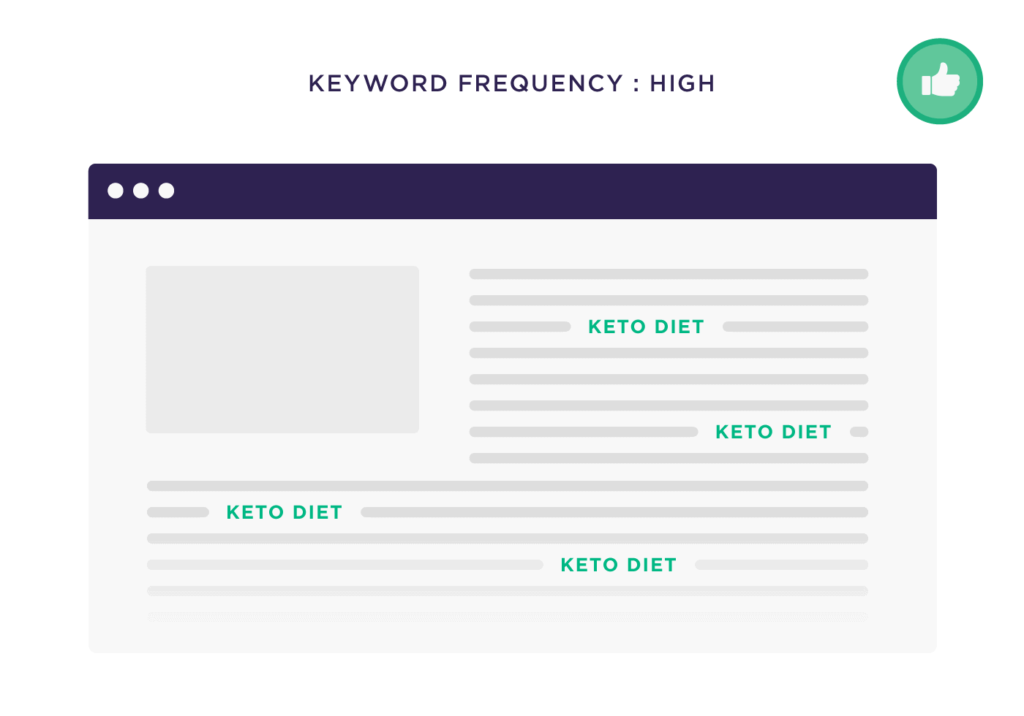
Be clear:
This has nothing to do with keyword padding or something like that.
It simply mentions your target keyword a few times to confirm to Google that your page is really relevant to the topic.
For example, one of our articles has the top 3 keywords “YouTube SEO” in Google.
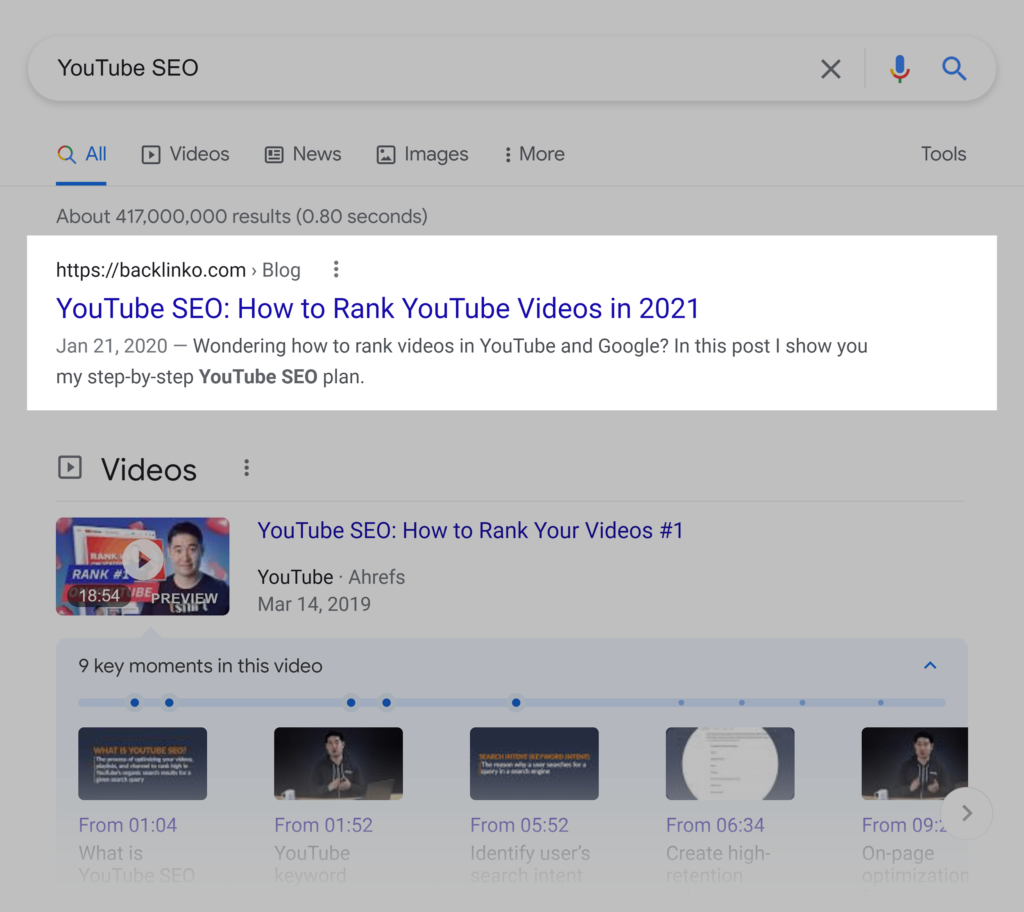
How many times do you think I used the exact term “YouTube SEO” in that 3200-word article?
Six times.
So, yes, there is no need to overdo it. As long as you use keywords naturally a few times, it will be fine.
Use external (outbound) links
External links to related pages can help Google find out the theme of your page. It also shows Google that your page is the center of quality information.
It’s not just a theory. People at Reboot Online conducted an experiment to see if external links could help improve rankings.
They created ten new websites. Half of the sites are linked to authoritative sites (such as Oxford University). The other half has no external links.
Sites with external links rank higher than those without external links.
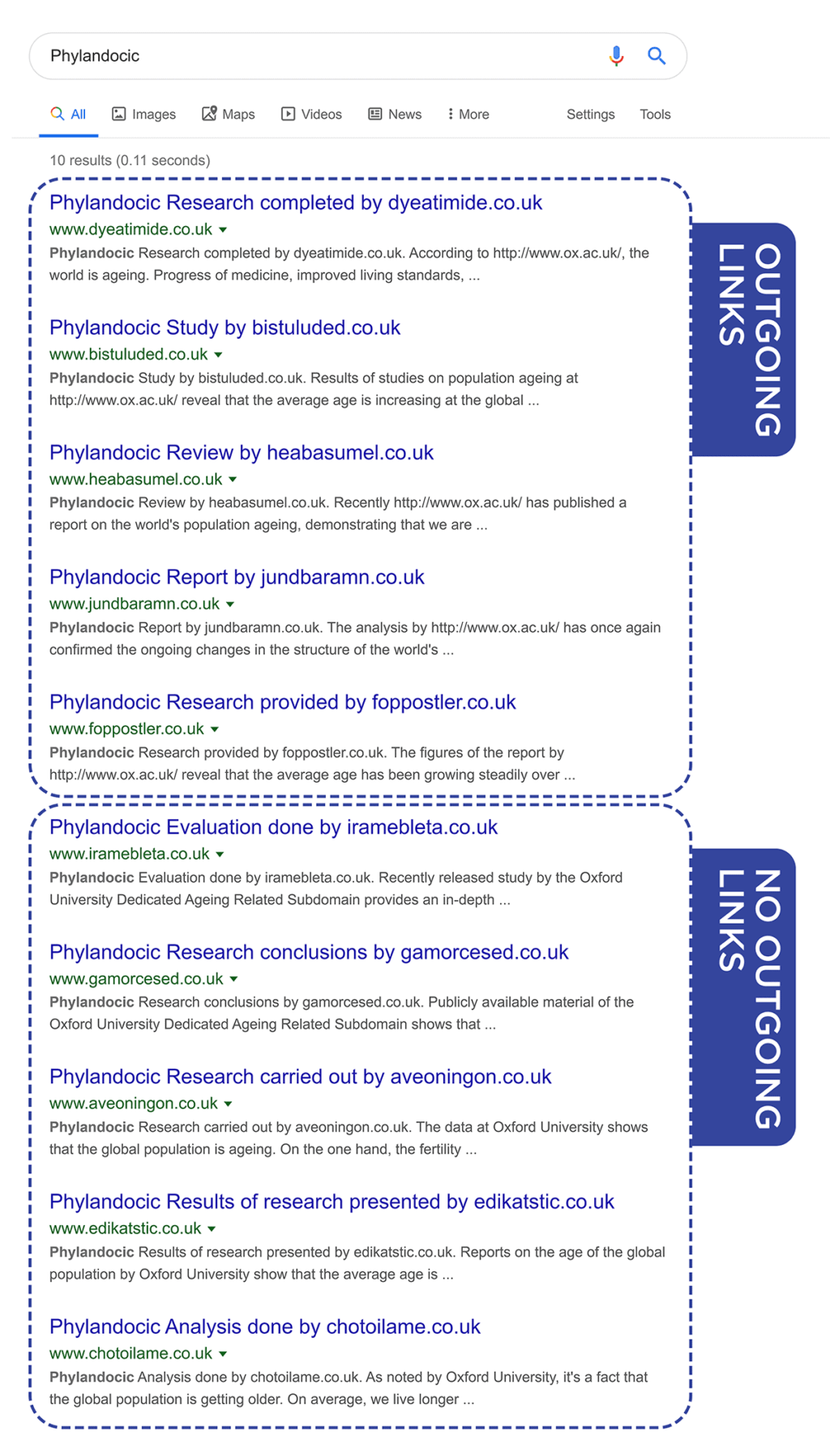
Optimize your SEO URL
Your URL structure is an undervalued part of the page SEO.
Yes, Google started using strange URL versions of its search results some time ago.

But even so, the terms you use in URL are shown here. In addition, the URL in Mobile and Desktop SERP is now above the title tag.

So I would say that your URL is actually more important now than it used to be.
With this, here’s how to create a SEO-friendly URL:
- Make your URL short
- Include a keyword in each URL
Seriously. That’s all.
For example, the link building guide is optimized around the keyword “link building.” So I used this keyword in my web site.

This is not to say that your URL should contain only your keywords. It’s great to add one or two extra words to your URL.

… Or have your keyword appear after the subfolder.

Chapter 3: optimize title and description tags

In this chapter, you will learn how to optimize the title and meta-description for SEO.
According to Google, the title tag is still “very helpful” to your ranking.
So they are worth optimizing.
This is the same as your description. Google may not use your description to understand the content on your page, but searchers will use it to determine the results to click on.
Therefore, if you want to write SEO-friendly title tags and descriptions, this chapter is for you.
Preload your title label
In my opinion, your title tag is the most important SEO factor on the page.
That’s because your title tag provides search engines with a high-level overview of the content of your page.
In my experience, the closer the keyword is to the beginning of the title tag, the greater its weight in the search engine.
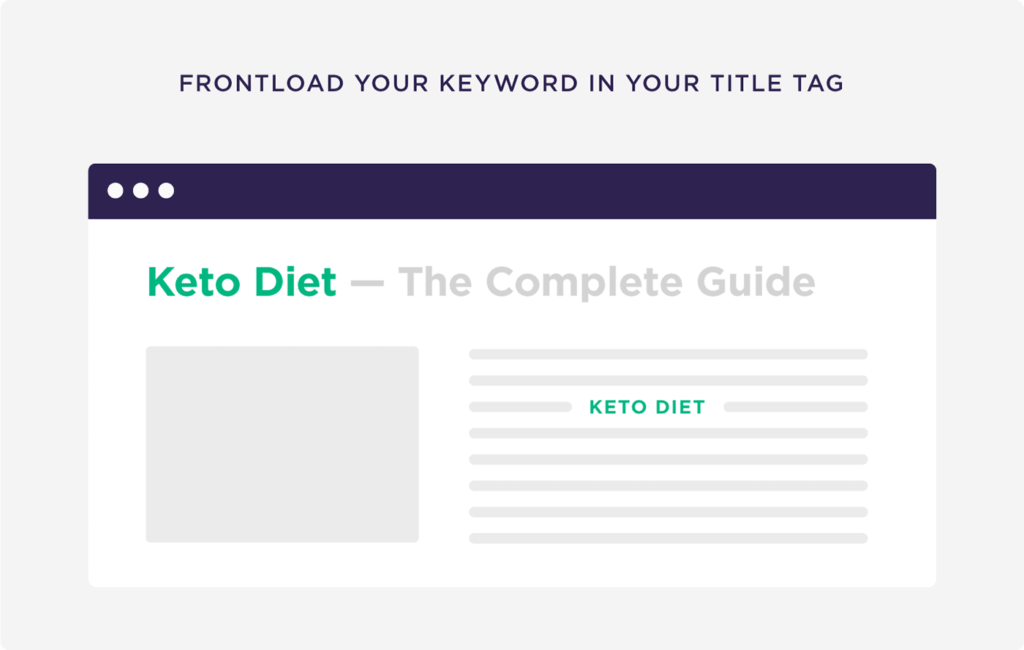
This is an example from my large list of SEO tools.
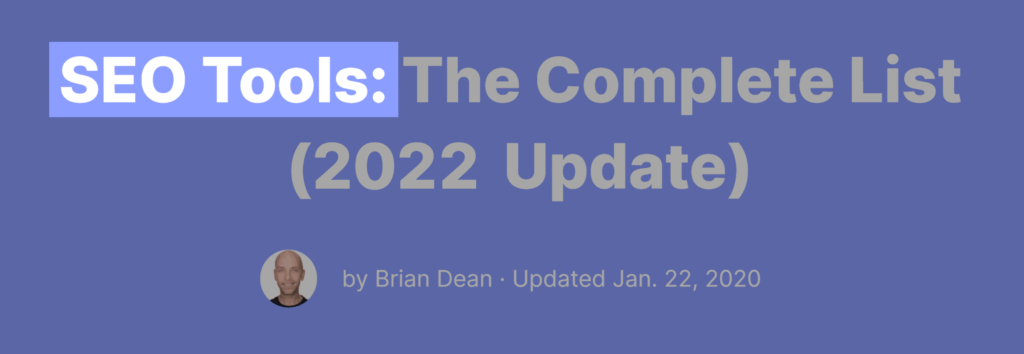
Your keyword does not have to be at the beginning of the title. It doesn’t always make sense.
But the closer you get to the front of your title tag, the better.
Use the title tag modifier
Using modifiers such as “best”, “guide”, “list”, “quick” and “review” can help you rank the long-tailed version of the target keyword.
For example, our SEO tools article includes the modifiers “best” and “free”.
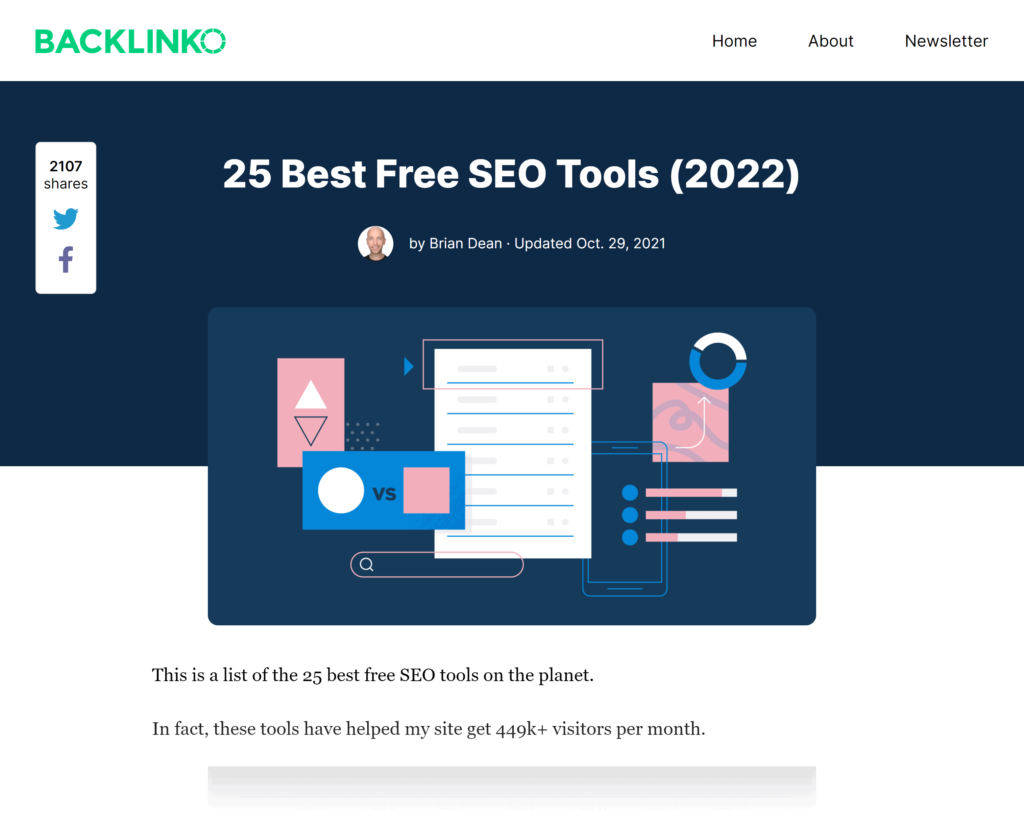
In this way, we can rank the long-tailed versions of “seo tools” such as the Best Free seo tool.
You can be even more strategic than that.
I added the title tag modifier “for SEO” to the list of keyword research tools.
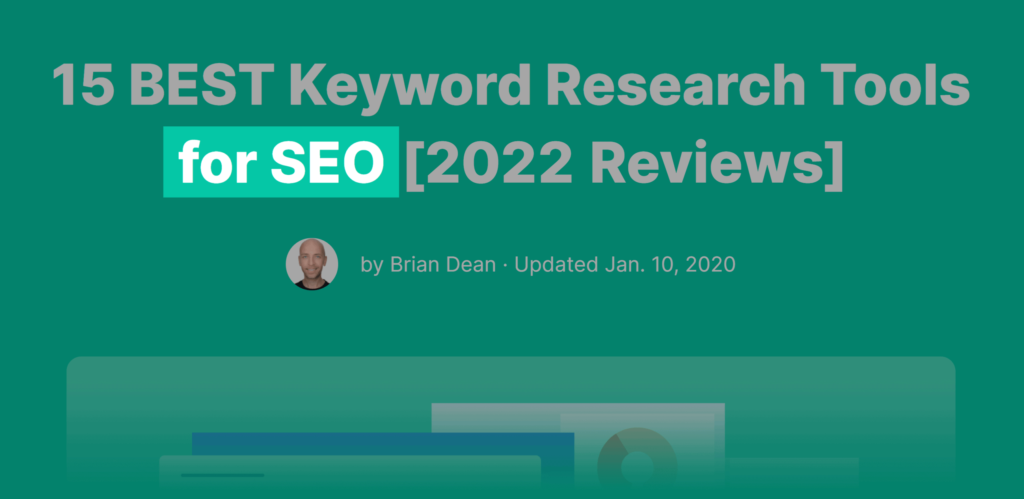
Why? So my page appears when people use terms like “SEO keyword research tool.” It worked!
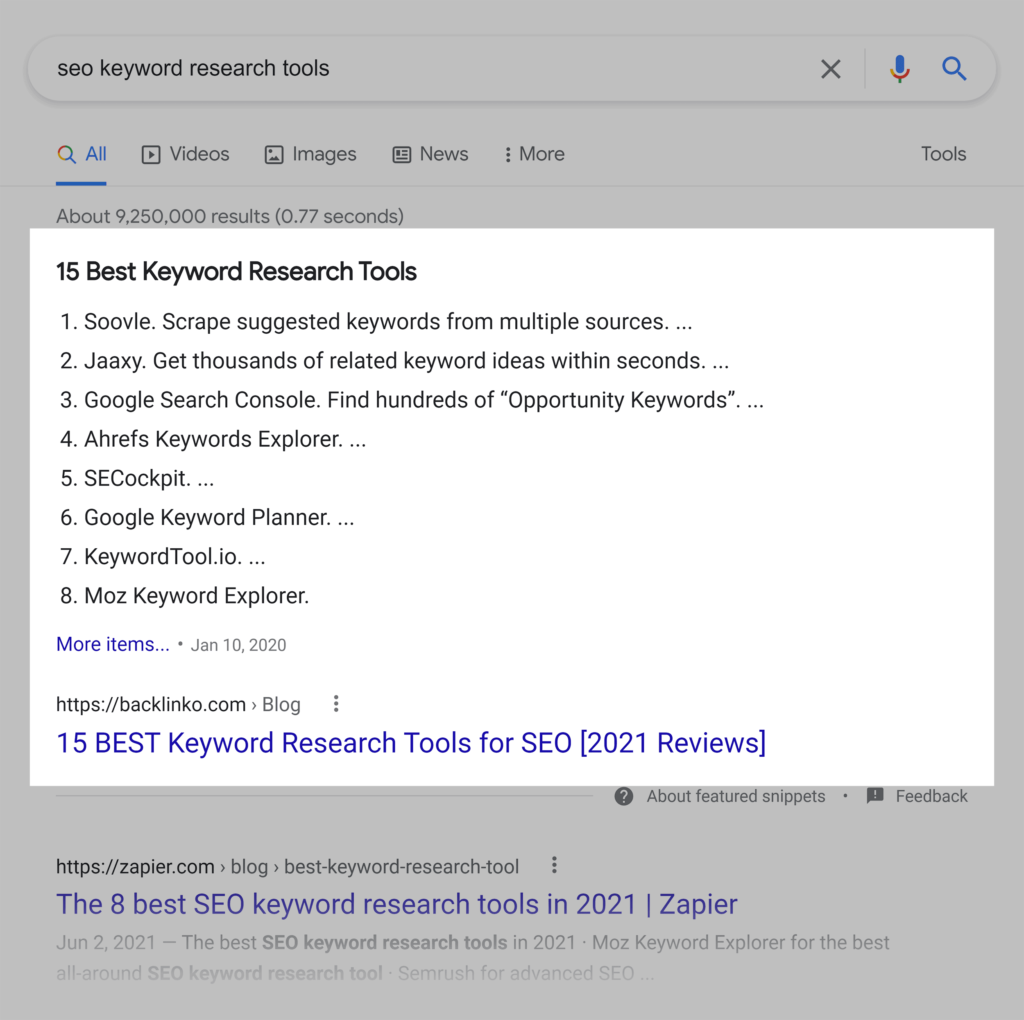
Use unique, keyword-rich meta-descriptions
Google’s getting started guide to search engine optimization states:
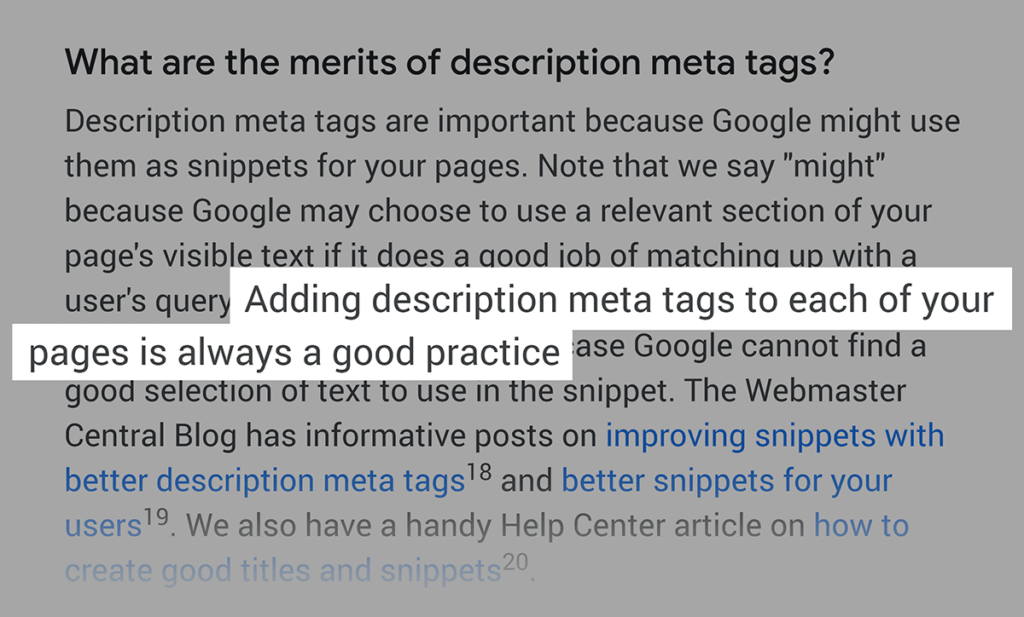
And Google recently suggested that you write your own meta-description.

(although Google can overwrite them with its own code snippets. )
That’s because a good meta-description can help your results stand out, which can increase your natural click rate.
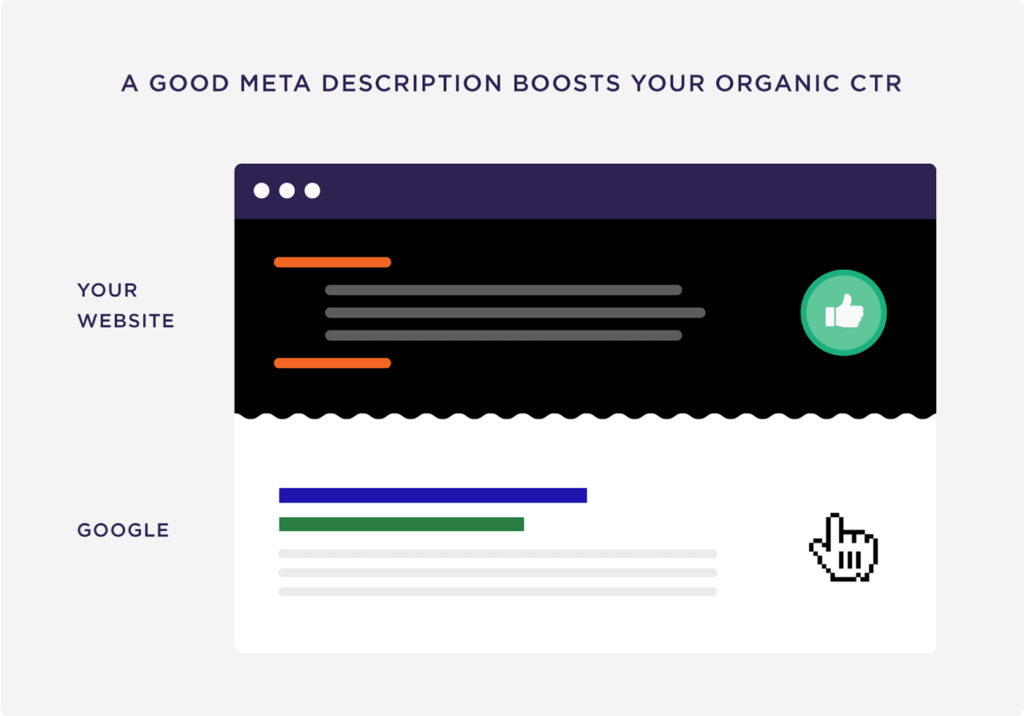
This is the description template I use and recommend.
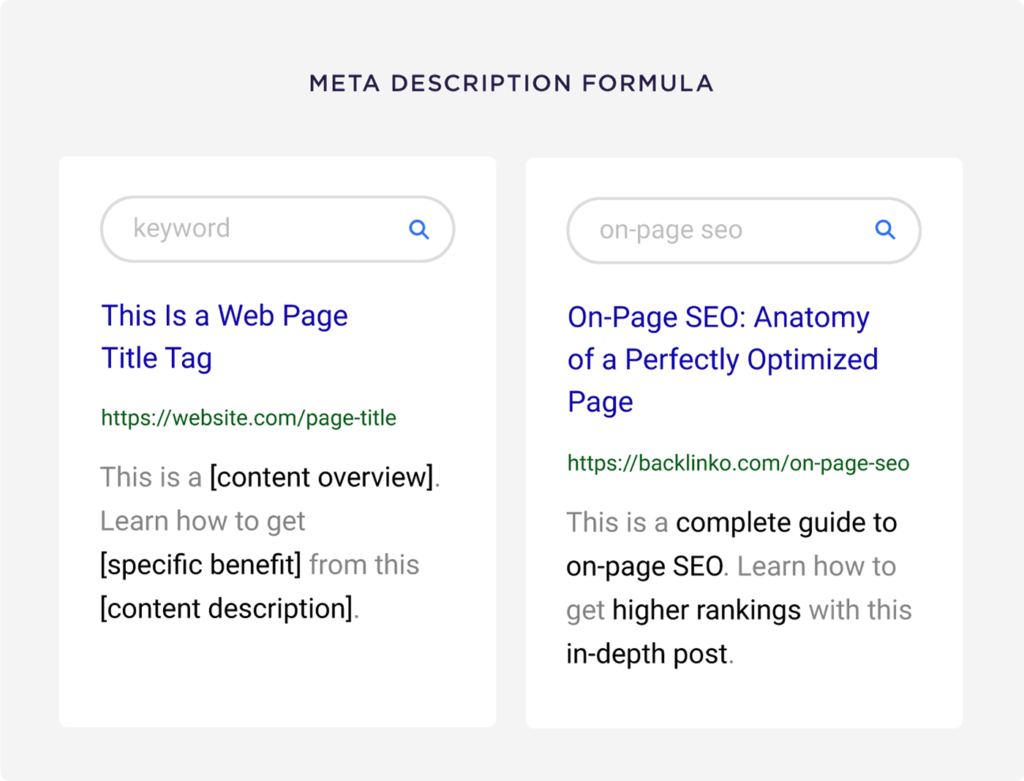
You also want to include a keyword in the description.
Why?
Because Google bold matches that person’s query.
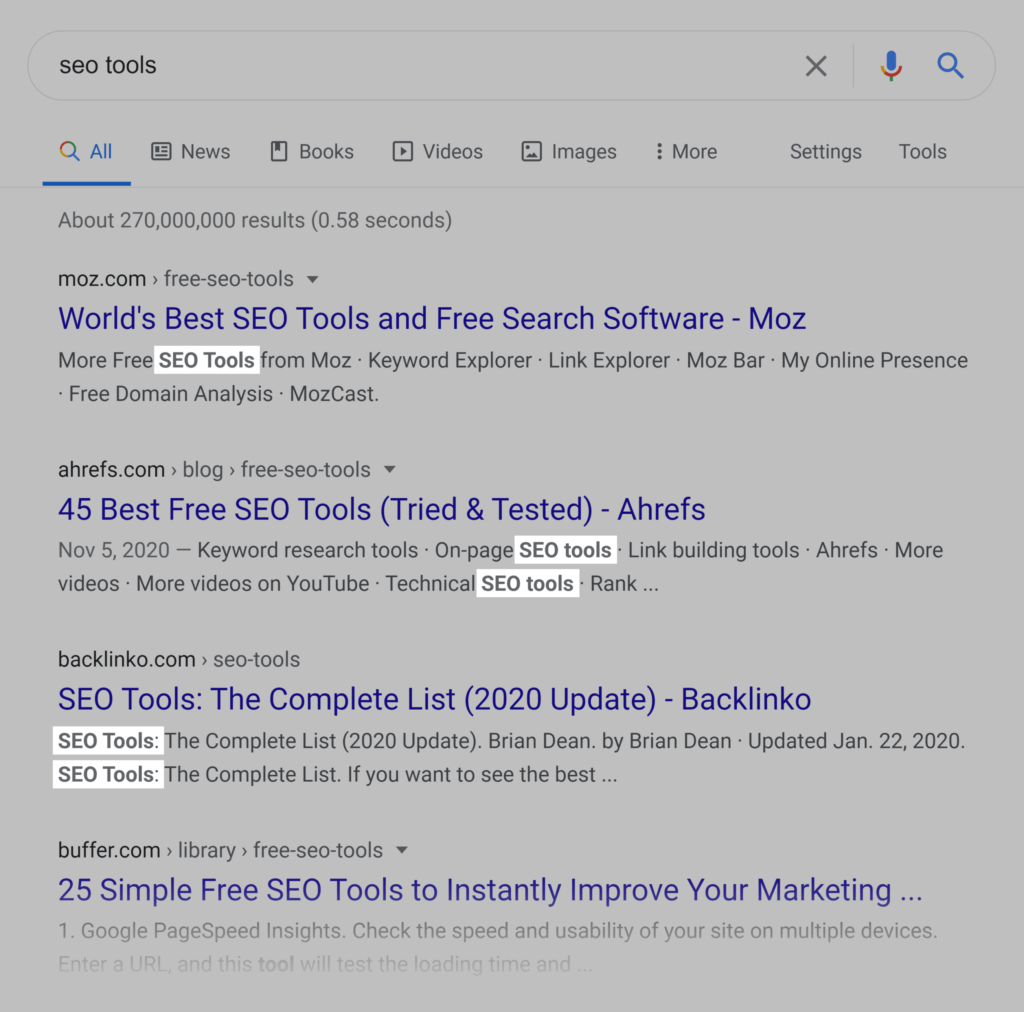
Again, this can give you a good click-through rate increase.
Chapter 4: write SEO content

Now is the time to post content that deserves to be ranked number one.
This process goes far beyond using keywords on your page.
To rank your content in 2022, your content needs to:
- Unique
- Value for money
- The search intention is optimized.
In this chapter, I’ll show you how to make sure your SEO content checks all three boxes.
Unique content
When I say “unique”, I’m not just talking about repetitive content.
I mean publish something that doesn’t just regurgitate what already exists.
In other words: bring the content of new things.
Something new can be:
- A new hint or strategy
- A better list of selected resources
- Strong design and user experience
- New case study
- Simplified step-by-step proc
For example, this SEO list article is listed as a selected snippet of the keyword “SEO list”.
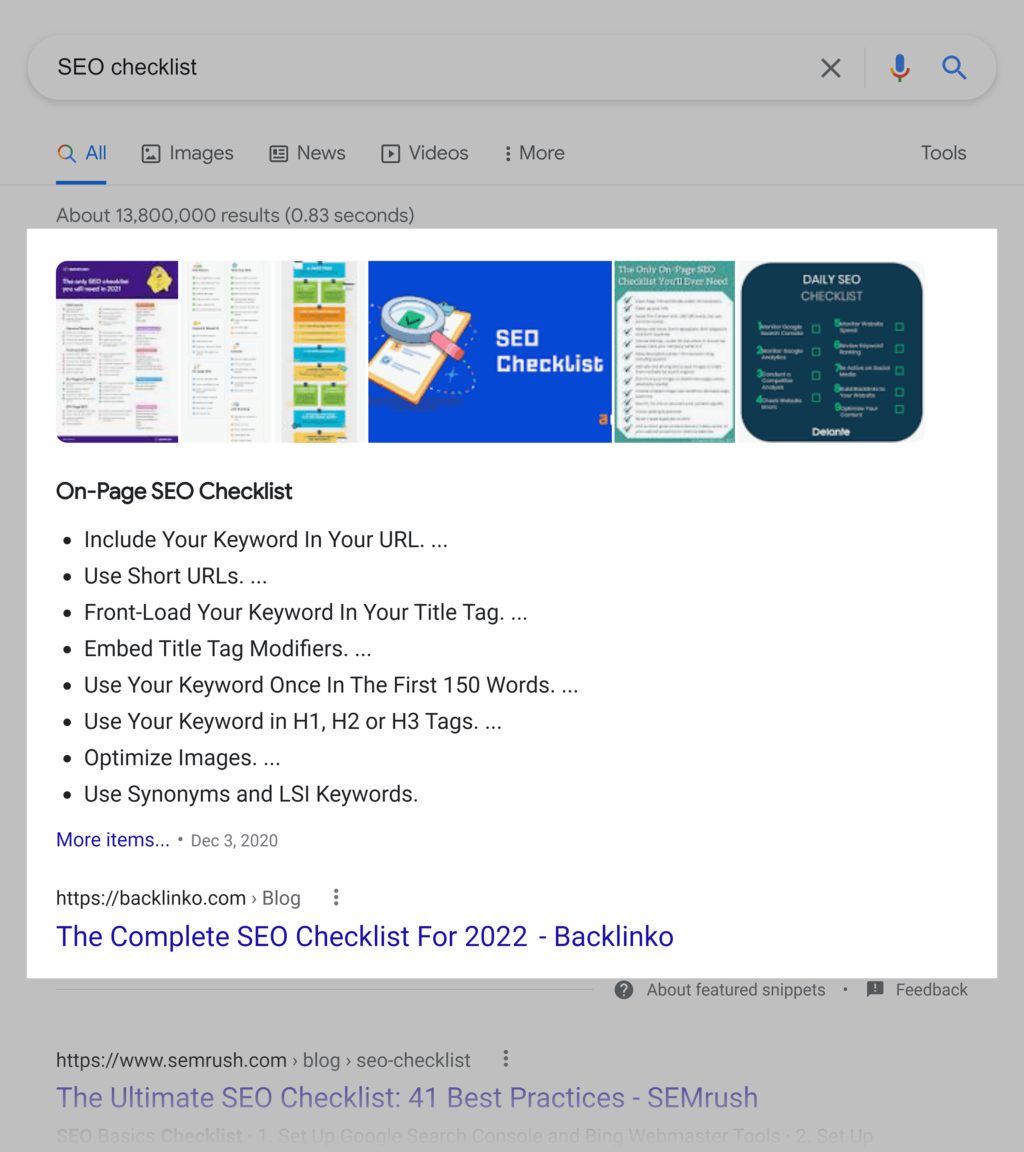
Do you think I rank because I use my keywords many times?
That must have helped. But for competitive terms like this, the use of keywords is not enough.
My page ranks high because it is unique.
Of course, it has tips and strategies that you can find anywhere:
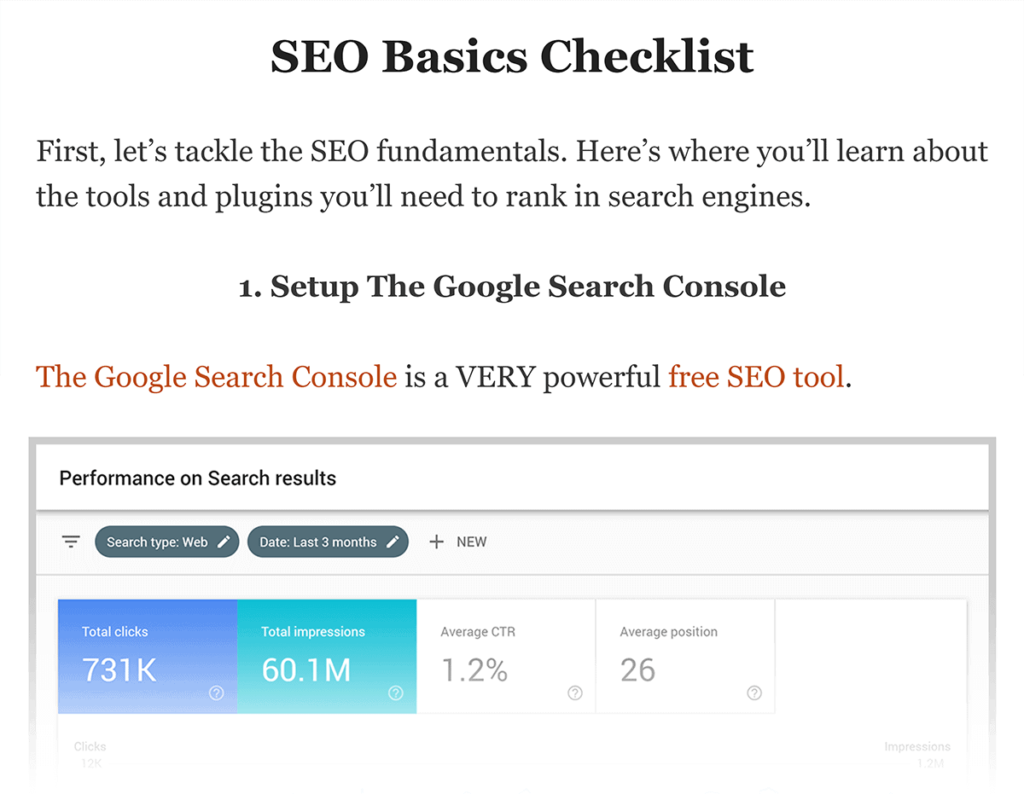
But it also has a lot of tips and examples, which you can only find in my article.
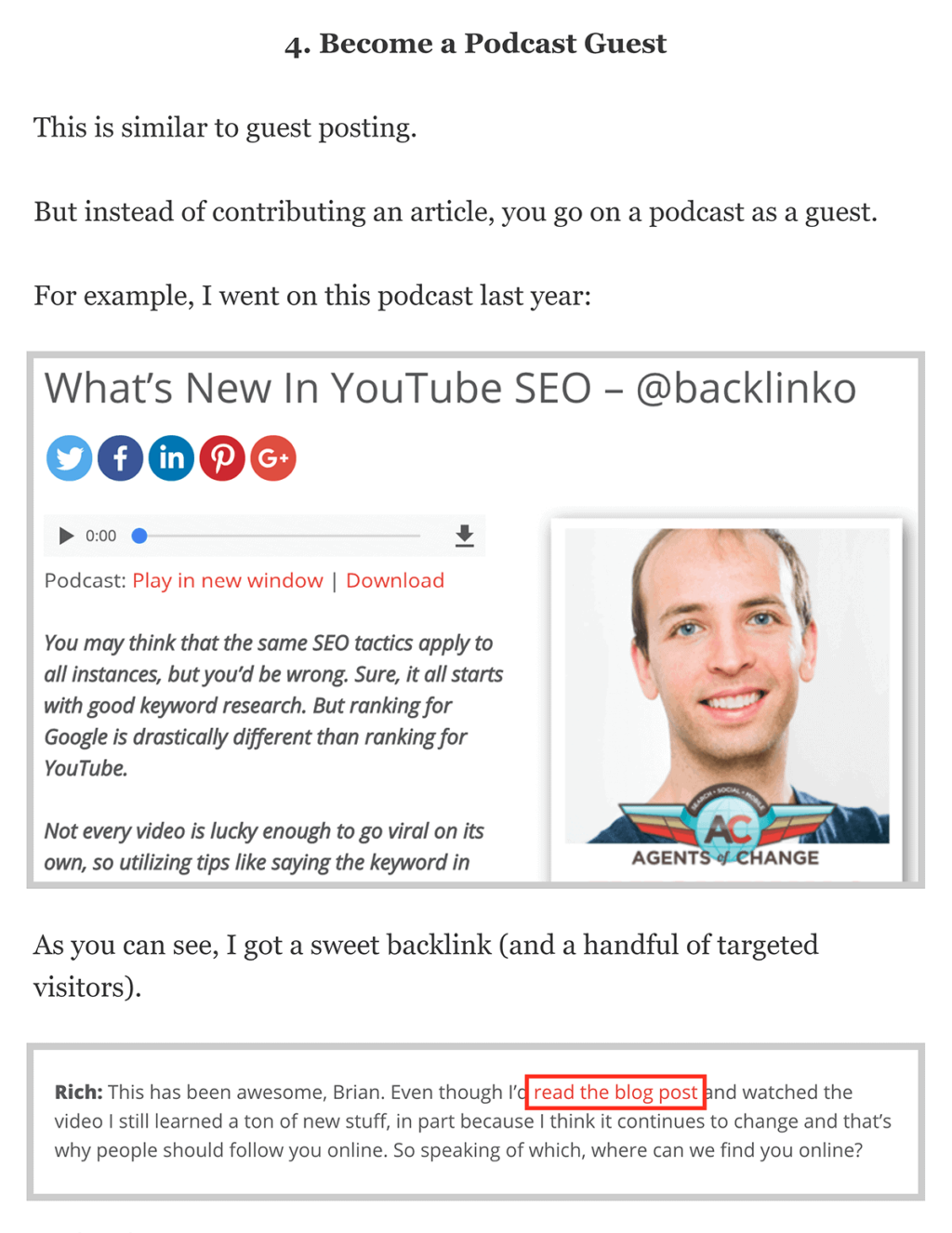
Valuable content
Releasing something unique is a good place to start.
But that’s not enough.
(after all, millions of blog posts appear every day. )
Therefore, in order for your content to stand out and attract attention, it needs to be very valuable.
Here are some ways to make your SEO content very valuable:
- Add details: images, screenshots, and steps make it easy for others to put your content into practice.
- Clear writing: strong copywriting will make your content more attractive.
- Updated material: new policies, steps, and examples help a lot.
- Expert author: most of the content is written by people who have never done what they told you. Content from people with first-hand experience is almost always more valuable than what is written by random freelance writers.
The main thing that makes my SEO list article so valuable is the list itself. It starts with something friendly to beginners.
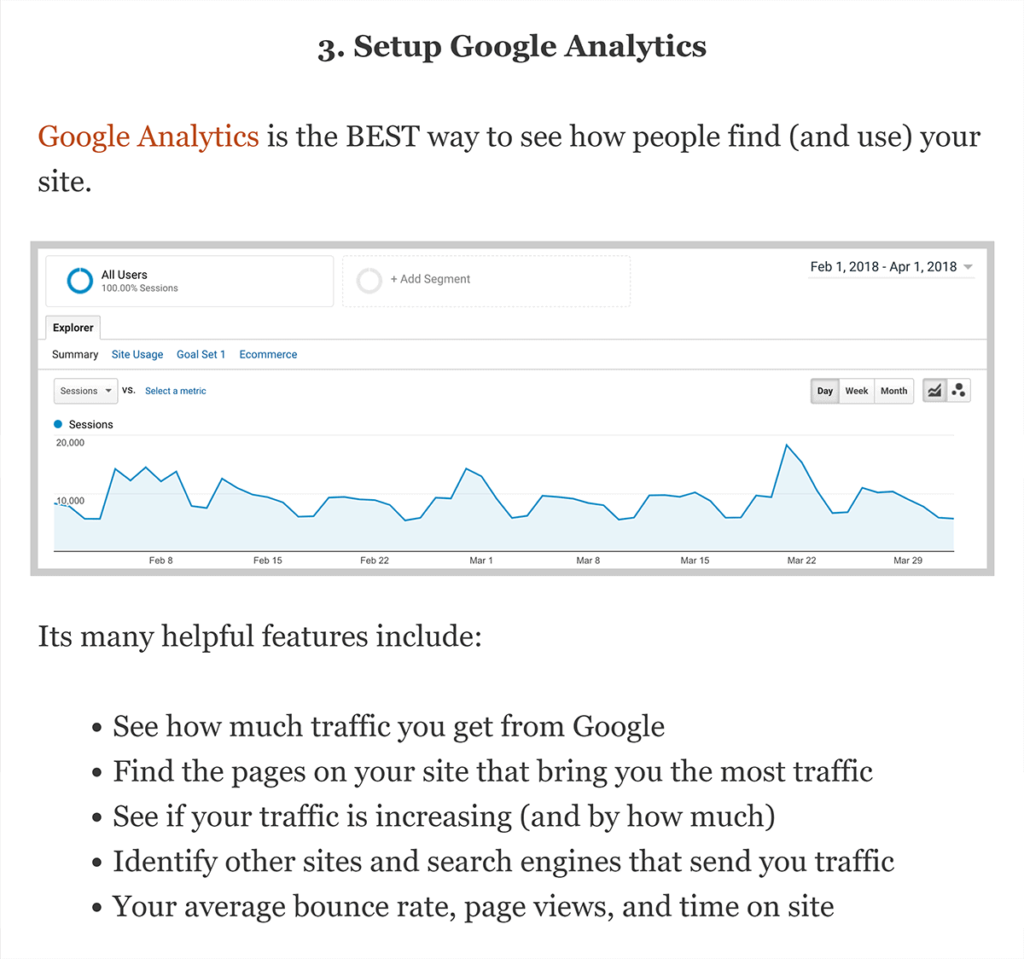
And become more advanced with your work.
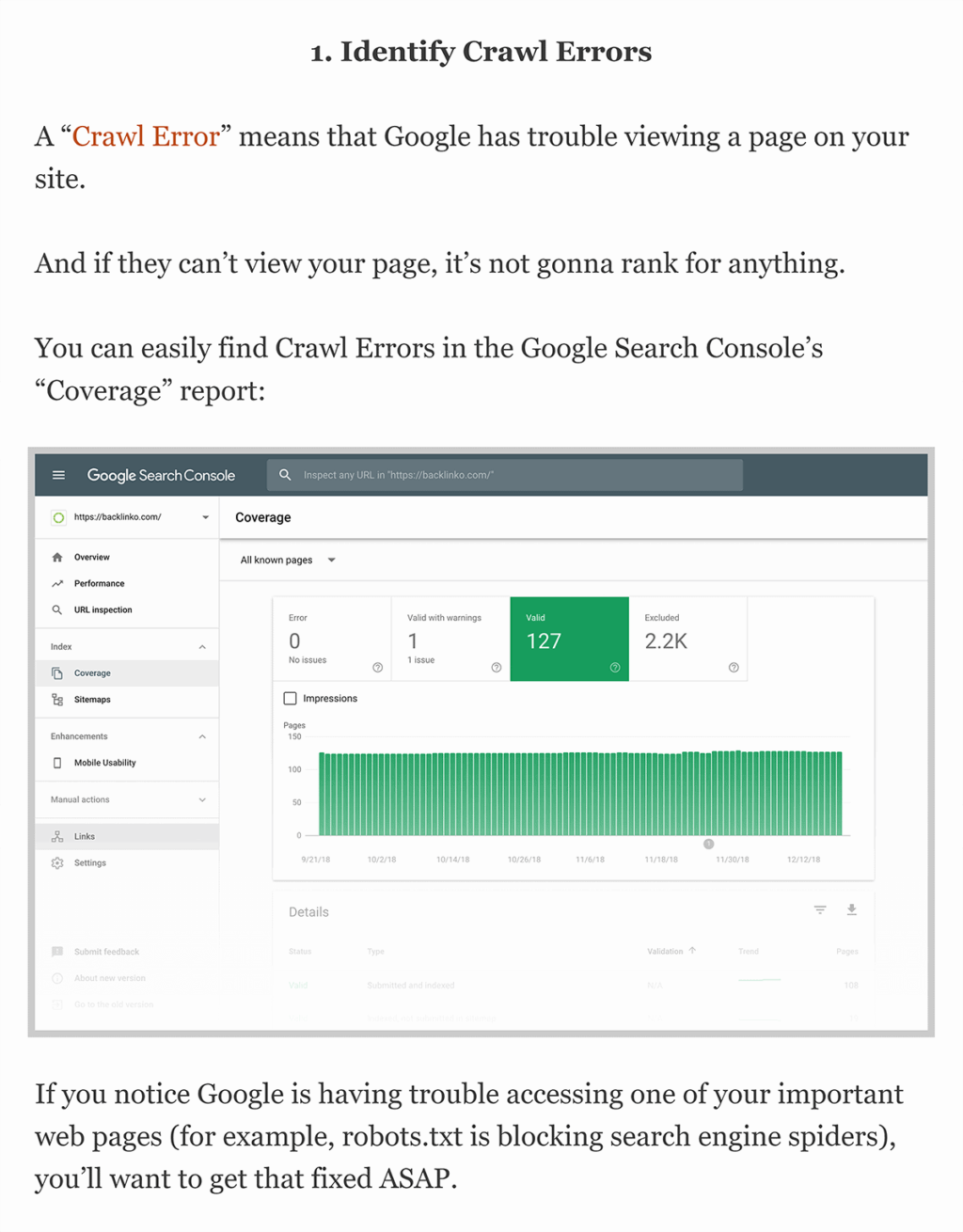
In the process, you will get a lot of details:
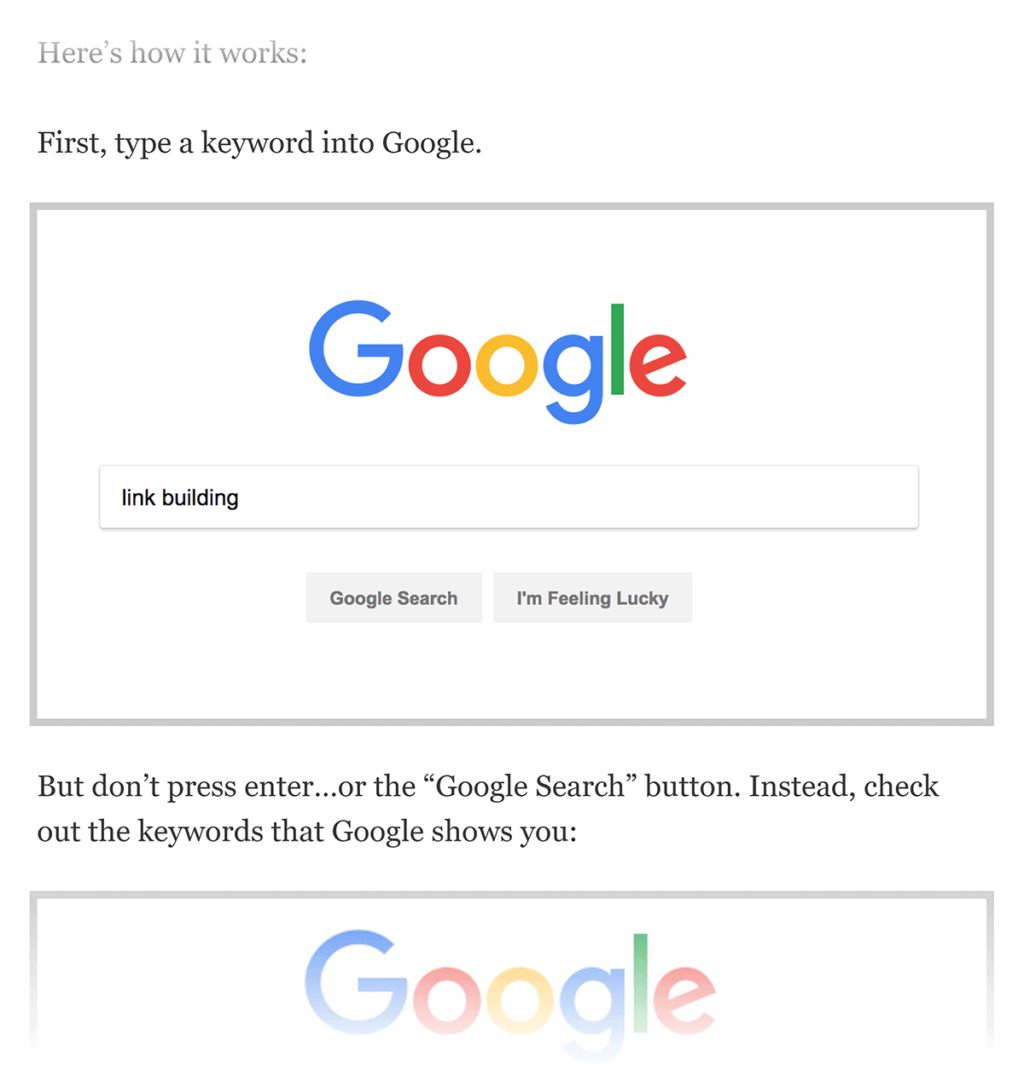
Latest examples:
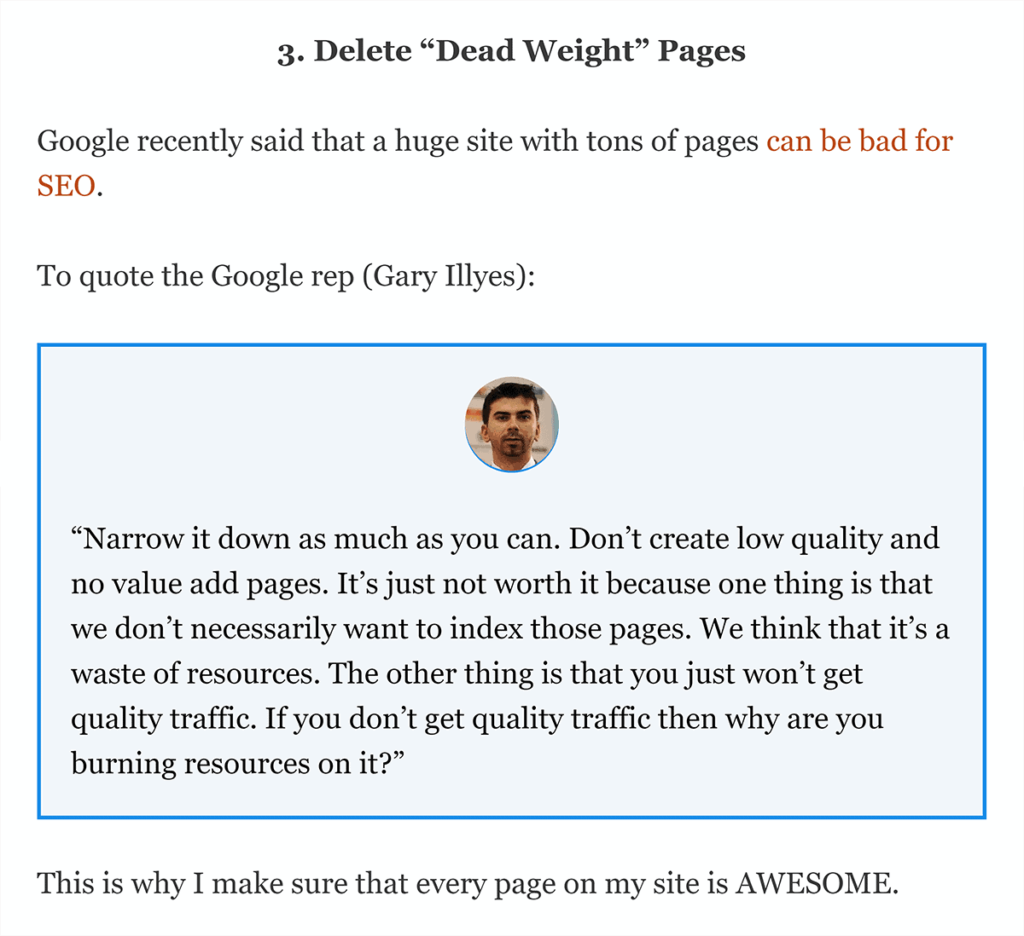
And the content written by people who live and breathe SEO every day:
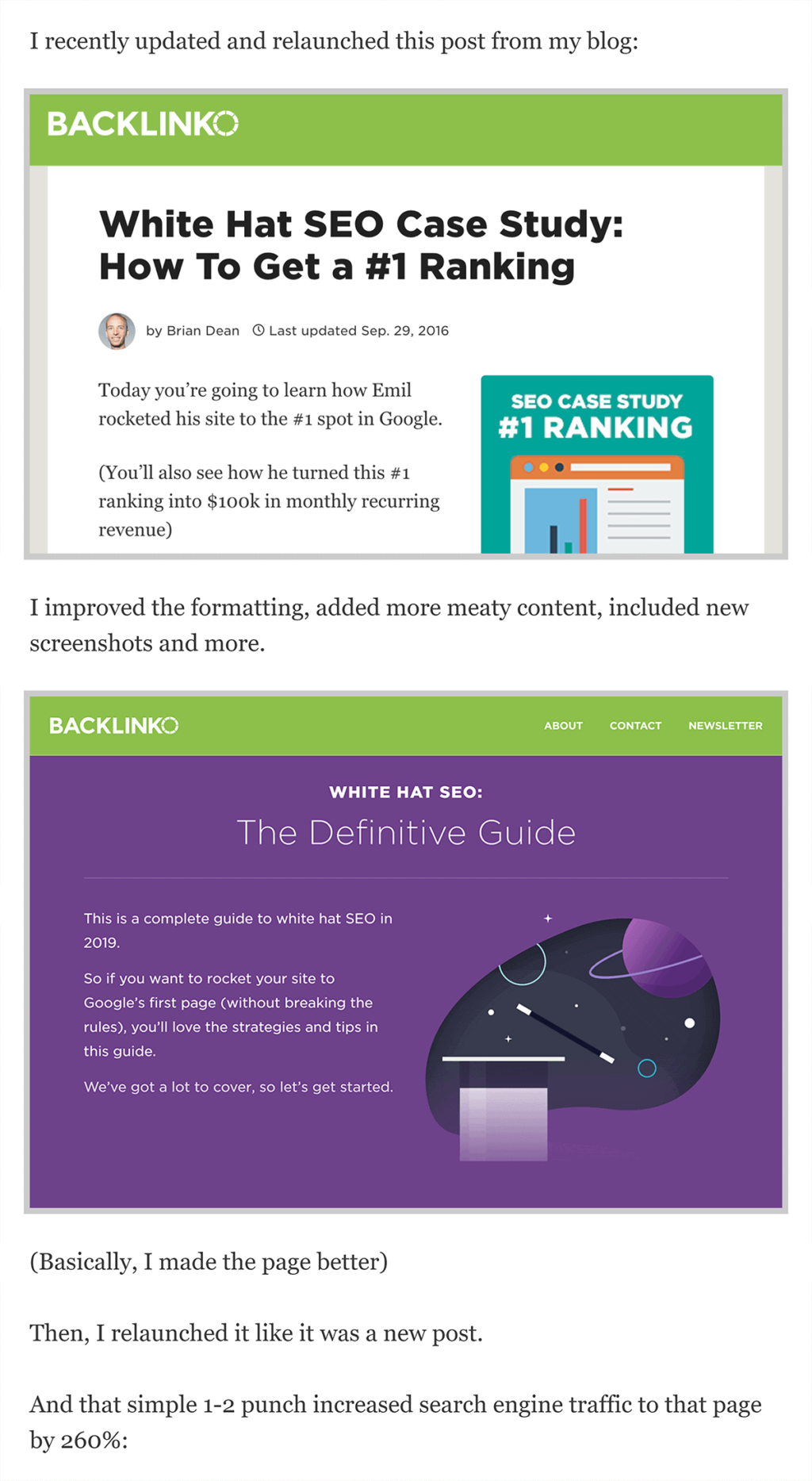
Content that satisfies the search intention
Unique and valuable content can take you to the home page of Google.
But if you want to stay there, your page must meet Search Intent.
In other words:
Your page must fully meet the requirements of Google searchers.
Otherwise, your page may be eliminated after page 3.

This is a mistake that I must study hard.
Some time ago, I released a comparison of the top backlink checkers on the market.

My goal is to rank for the keyword “backlink Checker”.
A few days after I published that article, I decided to check the SERP of the term.
I soon realized that the home page turned out to be 100% tools.

Literally, 10 out of 10 results are backlink checking tools. There is not a single blog post on the first page.
This means that the chance for my article to enter the home page is basically zero.
Oops!
Fortunately, I did rank the long-tailed version of the keyword (“Best backlink Checker”).
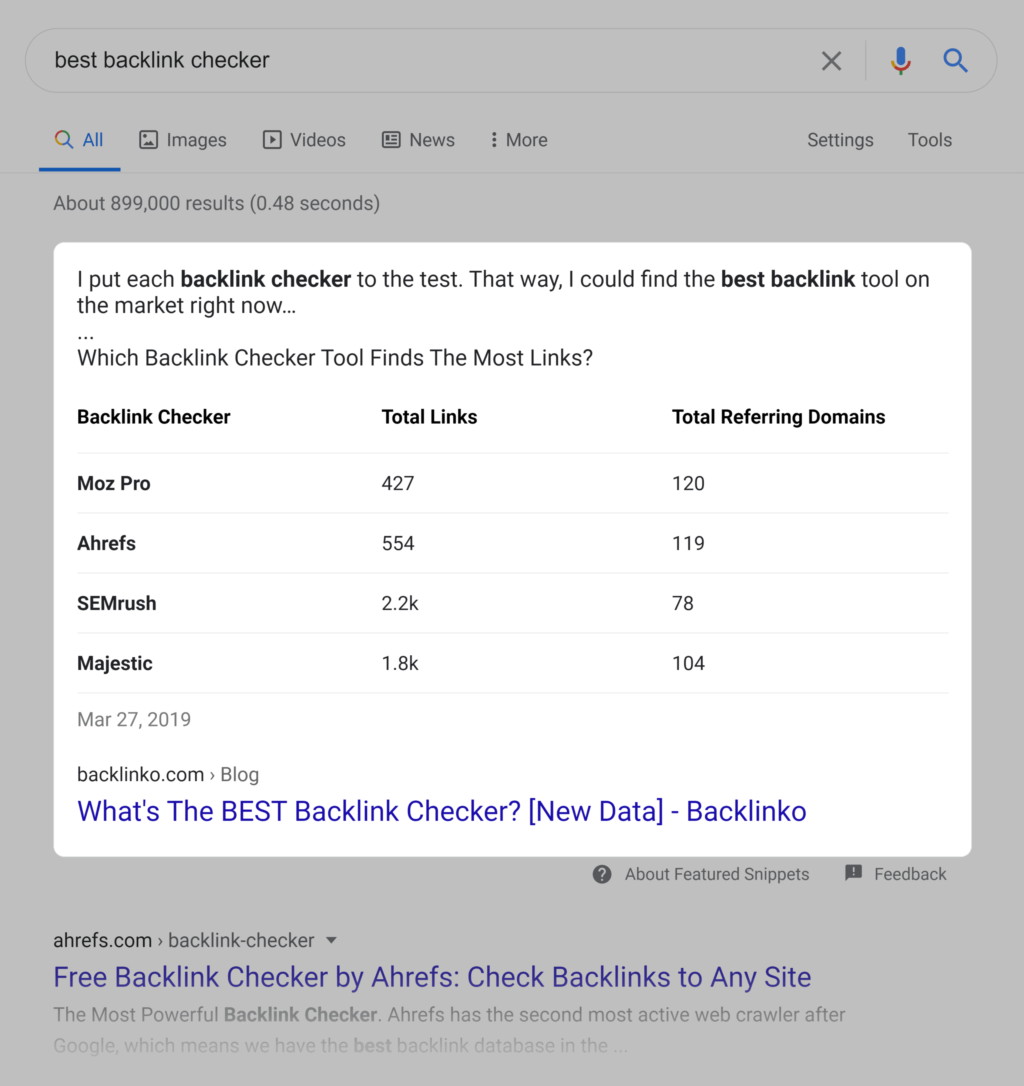
But if I spend more time looking at the search intent of the term, I will realize that my chances of ranking my content in the backlink Checker are zero.
Now it’s time for the next chapter.
Chapter 5: optimize click-through rate

Your natural click rate is important for two reasons:
First of all, the click-through rate (possibly) is a factor in Google’s ranking.
Second, increasing the click-through rate can bring more traffic to your site.
In this chapter, I’ll show you five practical ways to improve natural click rates.
Use the question title label
A few years ago, we analyzed 5 million Google search results to find out why some pages are easier to click on than others.
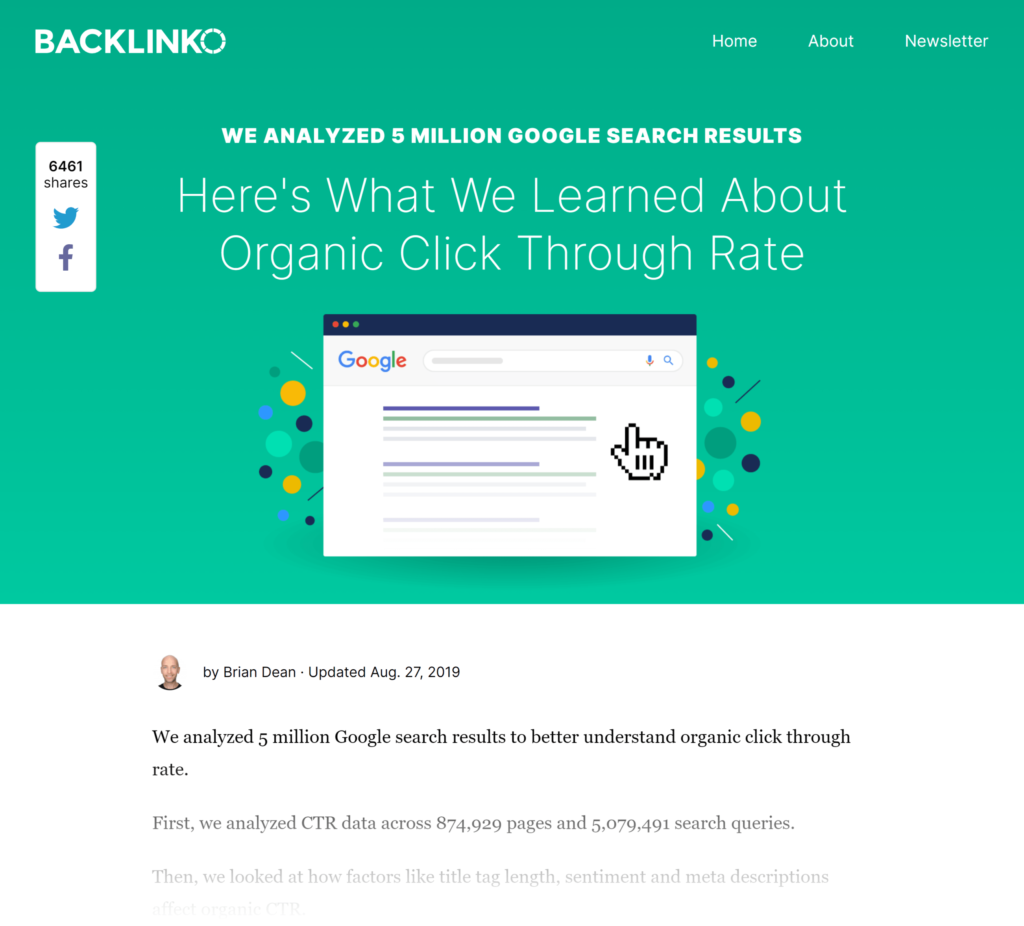
One of our most surprising findings is that the click-through rate of question-based title tags is above average.

Therefore, as long as it makes sense, I suggest testing the problematic title tag.
For example, the nofollow links Guide uses a question in the title tag.

That’s because anyone searching for “nofollow links” may just want to know what it means.
My title tag shows people that my website will give them what they want.
In fact, the page’s keyword “nofollow link” received 27% hits.
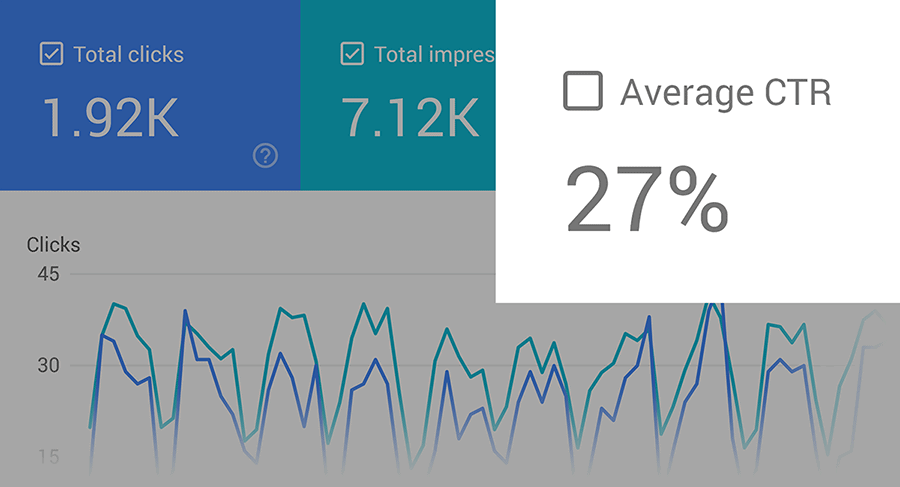
Fill in the missing meta-description
I talked about meta-descriptions as early as Chapter 1.
Specifically, I point out that you want your description to be very compelling.
But you don’t need to write an amazing description 100% of the time. Just one meta-description is enough.
In fact, we found that pages with meta-descriptions received about 6% more hits than pages without meta-descriptions.
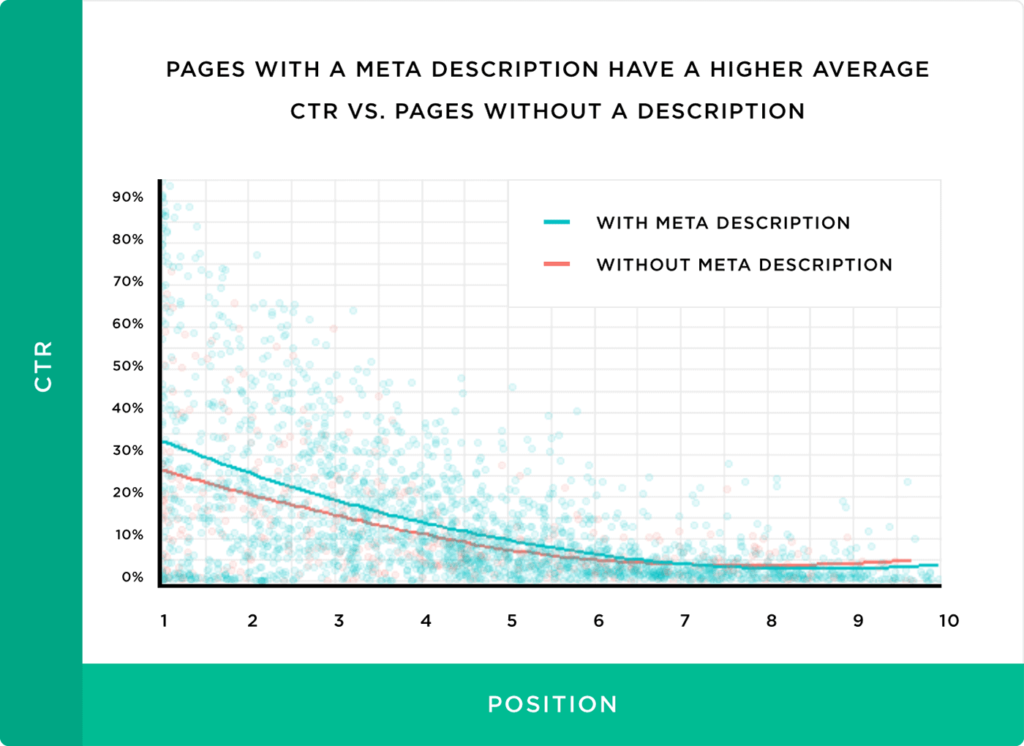
I recommend SEO review of your website to find pages without meta-descriptions. Then, add a description to the page that needs them.
Use the comment or FAQ architecture
Schema will not directly help your SEO.
But using some types of Schema allows you to hook up with Rich Snippets.
Rich clips can help you get more clicks.
The two best types of patterns to get rich fragments are review data structures:
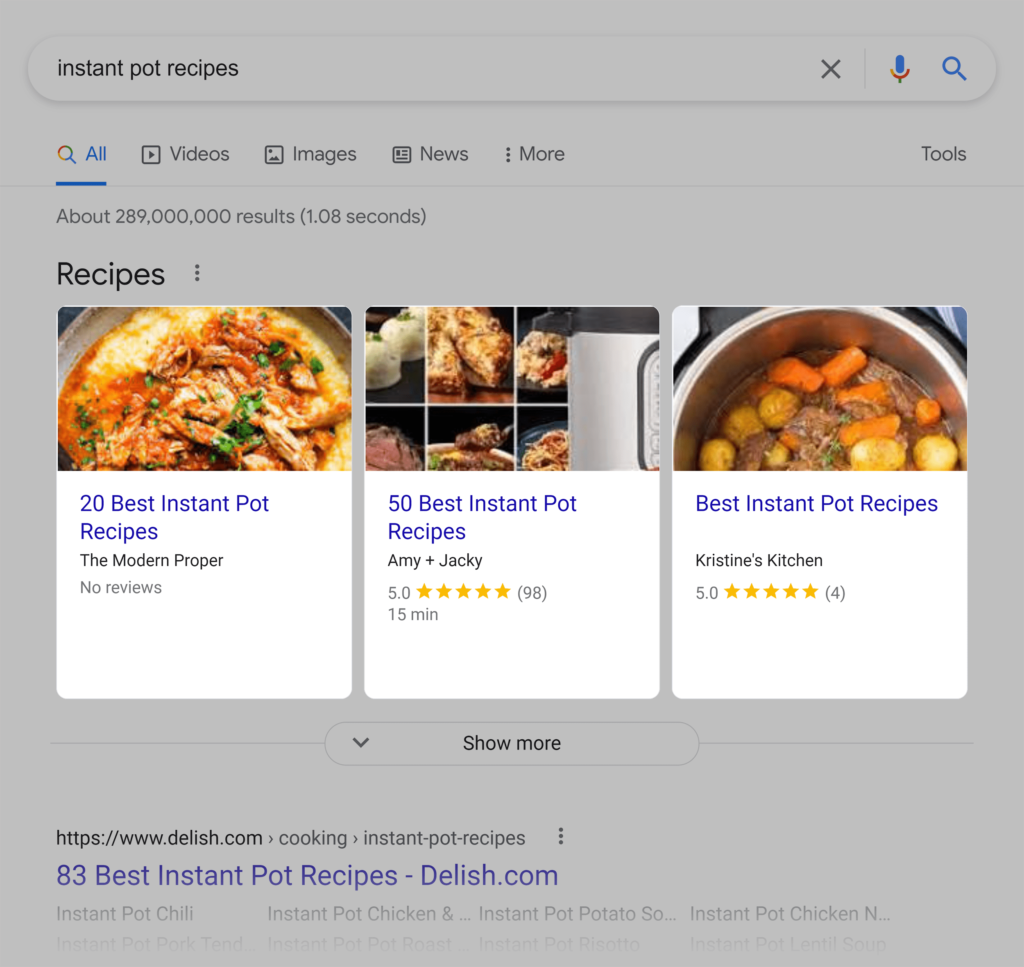
And FAQ architecture:
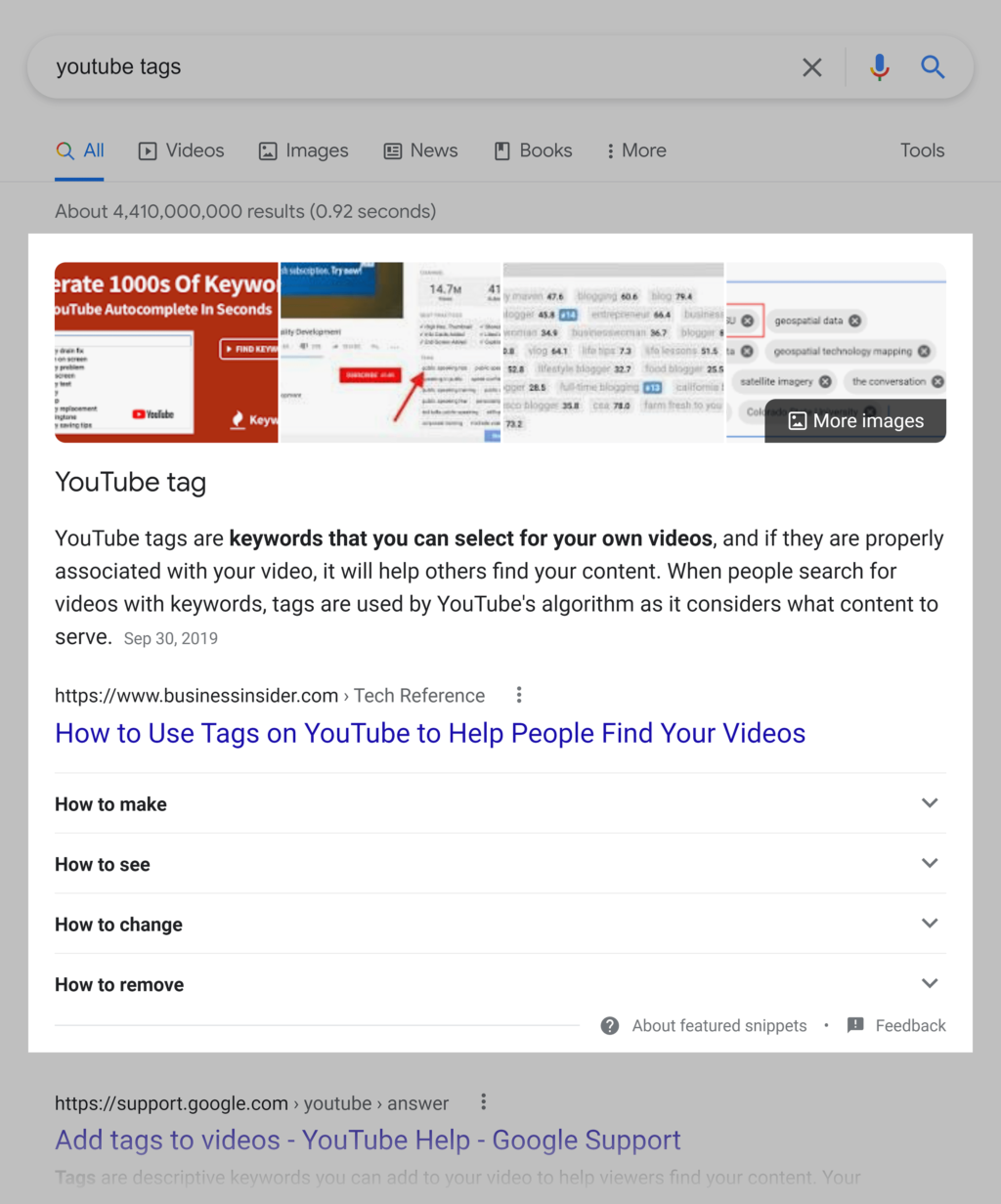
You can use structured data testing tools to double-check that your schema settings are correct.
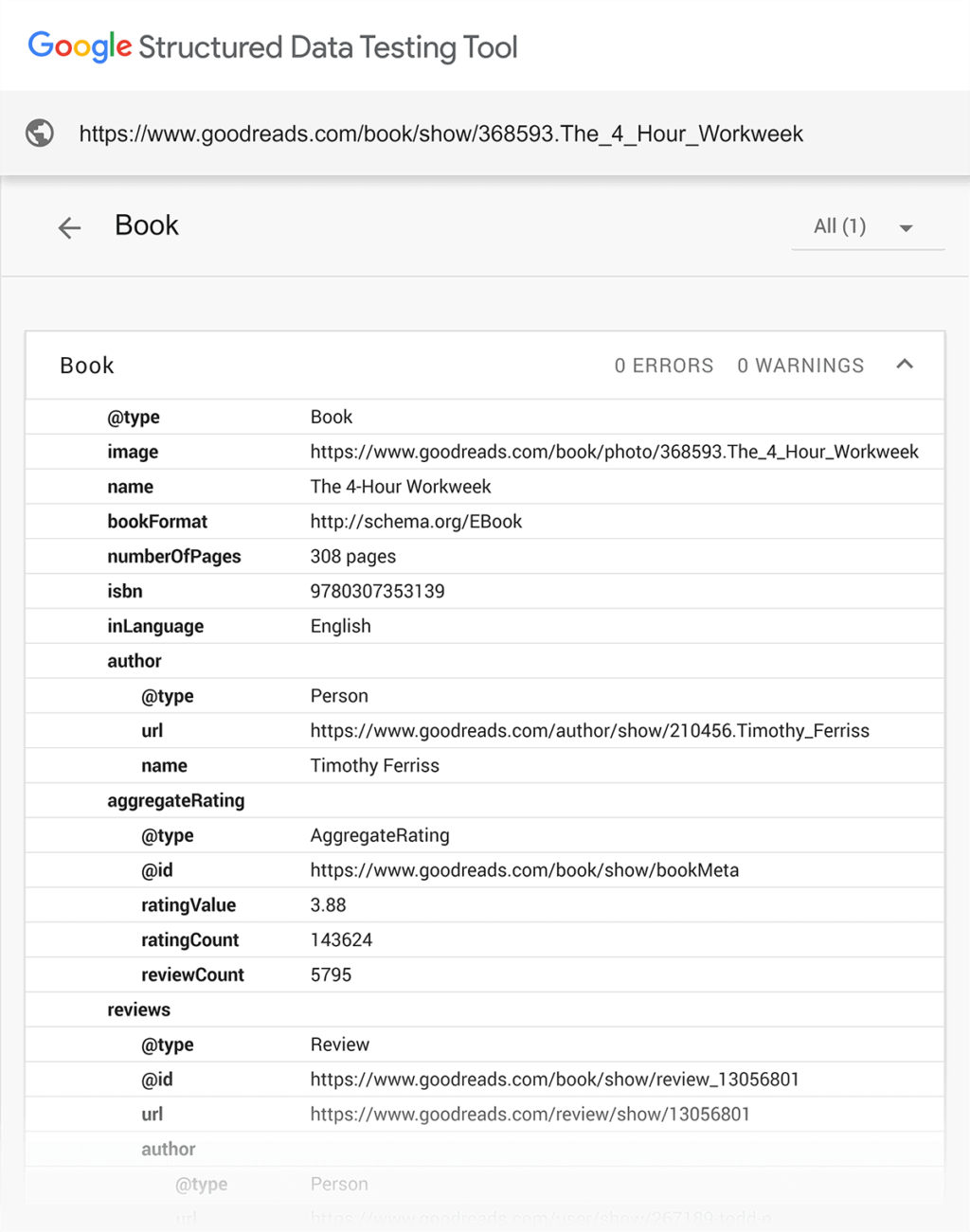
Add some emotion to your title tag
Our CTR study found that the click-through rate of emotional headlines was 7% higher than that of headlines without strong emotion.
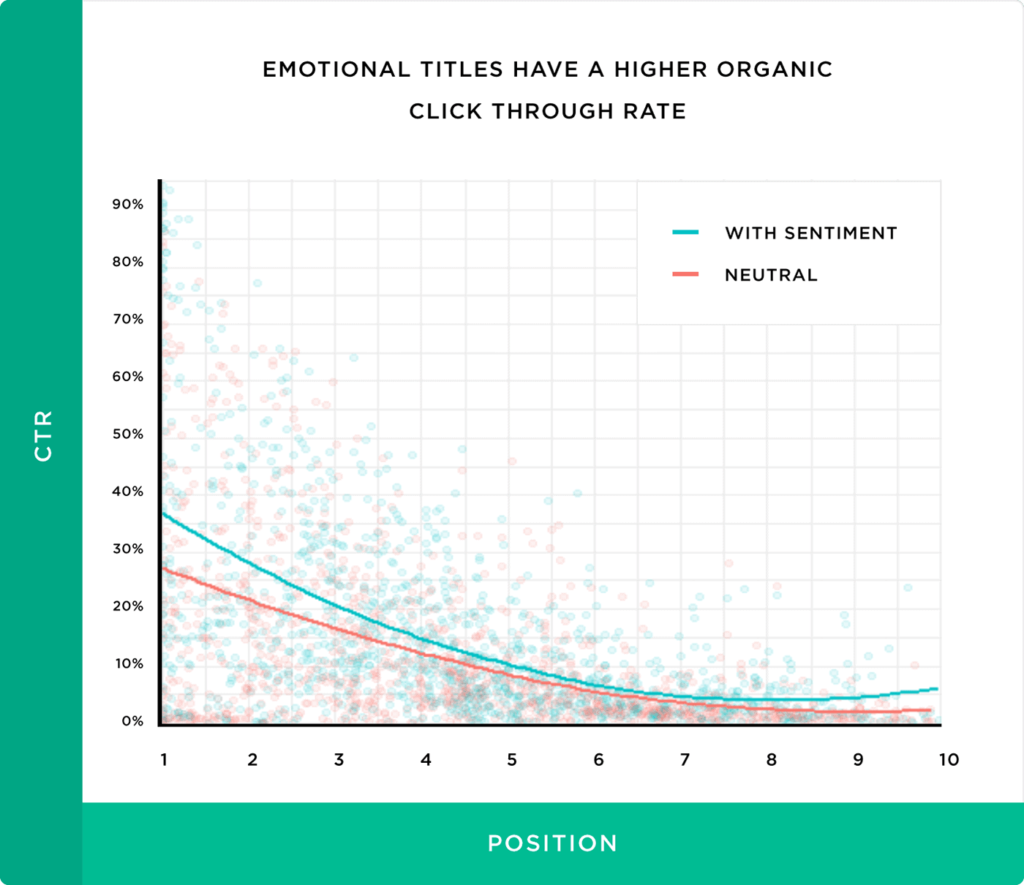
We also found that emotional “mantra” reduced the click-through rate by 12%.
What gives it?
Well, people will be attracted by headlines with emotional impact. To a certain extent.
If the title goes too far, it looks like click bait.
They will click on another result that does not look so junk.
Bottom line: write title tags with some emotion. But avoid using words such as “crazy” and “powerful”, which will make your title look like click bait.
Add the current year to the title and description
This is an example of what I mean.

Adding a year to your title and description does not affect your click-through rate.
But in my experience, it does help… Especially for content that may soon become obsolete.
For example, people who search for “Seneca philosophy” don’t need what they posted last month.
But for keywords like “the best smartphone,” people want to make sure they are about to read the latest content.
Adding a year to your title and description makes it clear that your content is up-to-date.
Chapter 6: page user experience signal
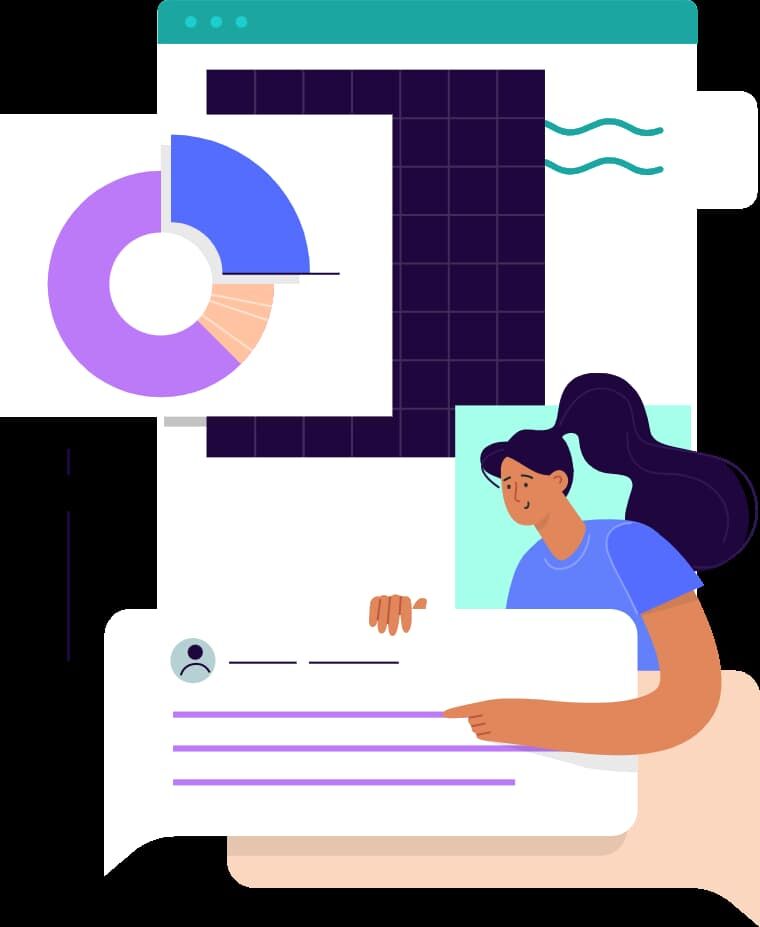
In this chapter, I’ll show you how to optimize your content for “UX signals.”
In other words, how Google searchers interact with your content.
Does Google really follow Dwell Time, Bounce Rate, and other user interaction signals?
Right.
In fact, Google’s “how search works” says that to help them rank the best results, they “use aggregate and anonymous interactive data to assess whether search results are relevant to queries”.
Now is the time to show you how to make sure your content keeps Google searchers on your page.
Push the content to the front screen
When someone logs in to your site from Google, they want a quick answer.
This is why you want to avoid a large number of images on the first screen, as follows:
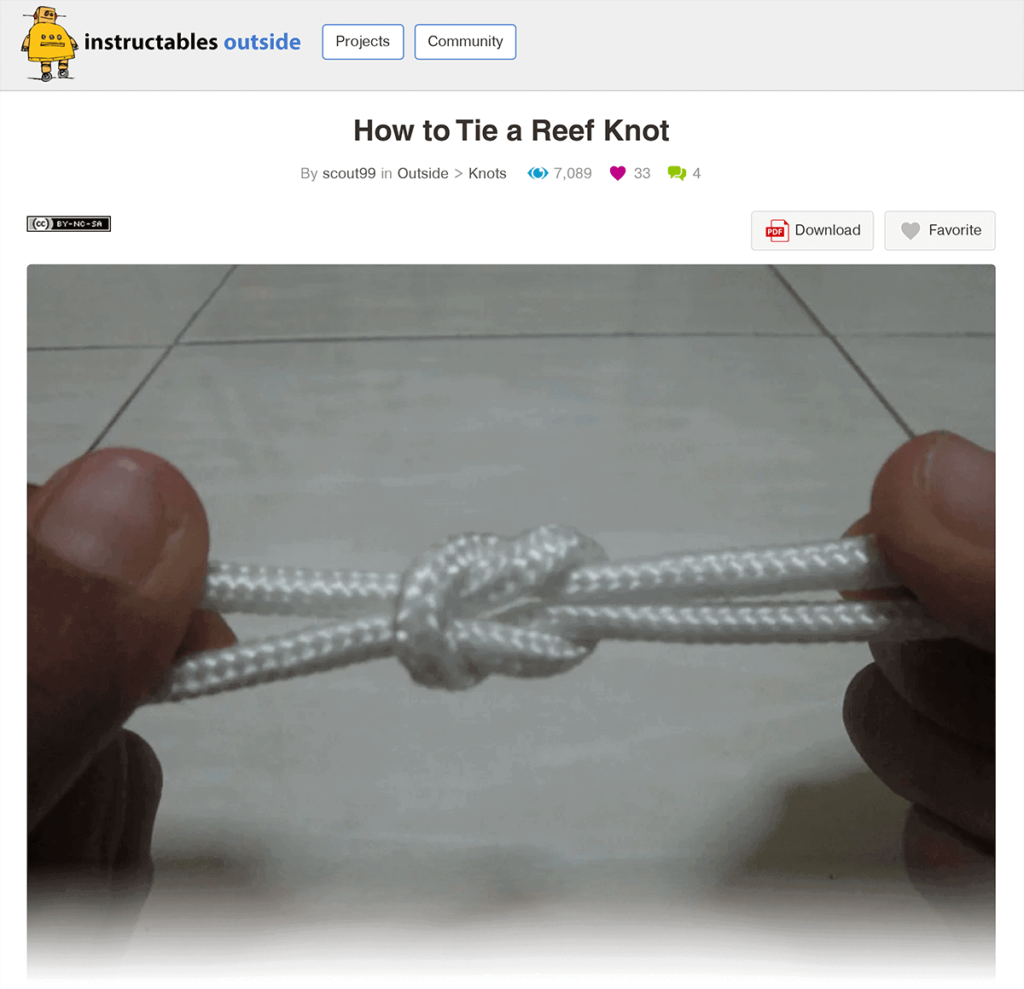
Instead, put your title and introduction in front and center.
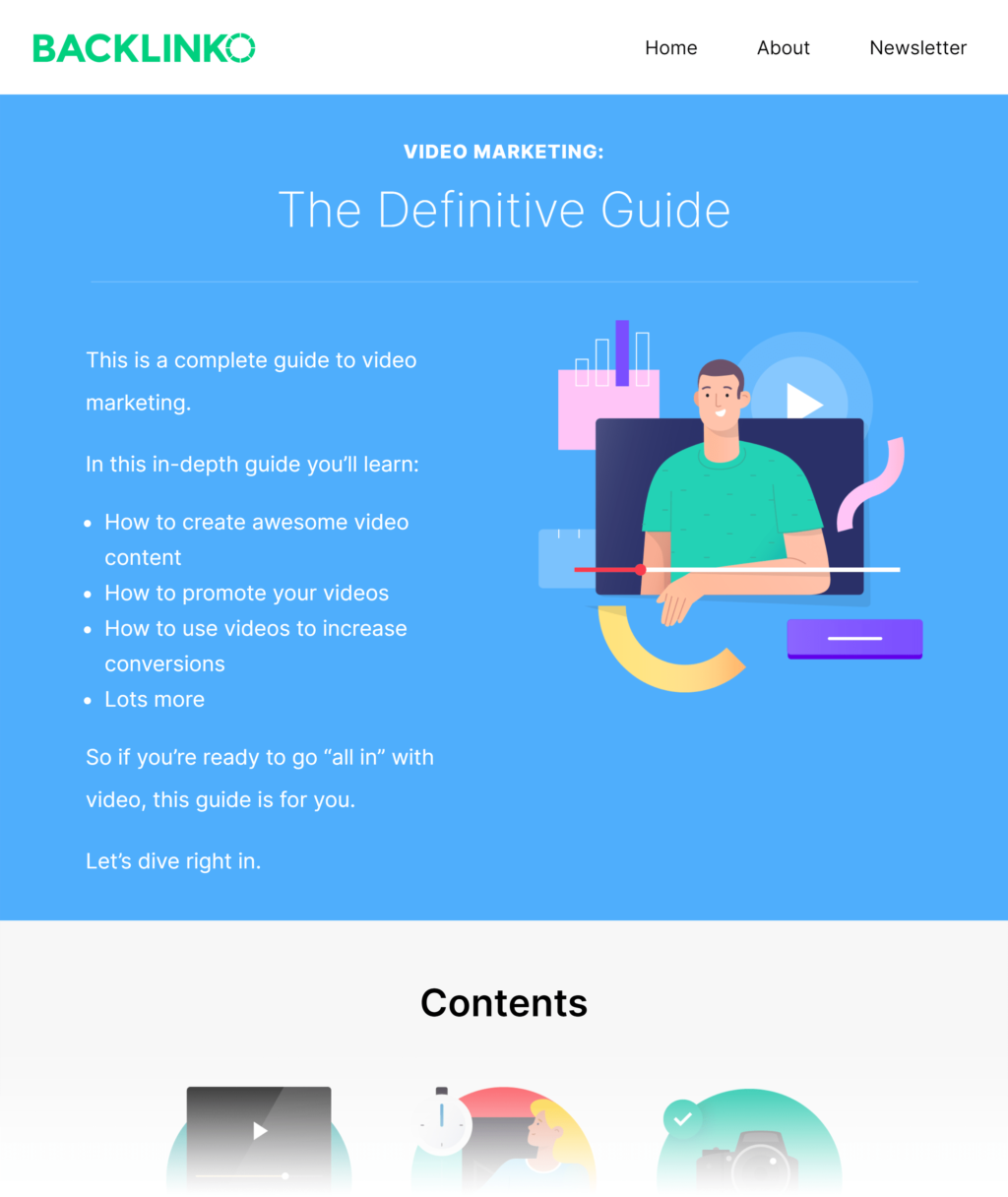
One thing to be clear: it’s okay to put a picture at the top of your article. However, if it pushes your content to the bottom of the page, that’s too bad.
Block your content
In a perfect world, visitors will read every word on your page.
But we don’t live in a perfect world, ?.
That’s why you want your content to be super easy to navigate.
You can see that a large number of H2 subheadings are used.
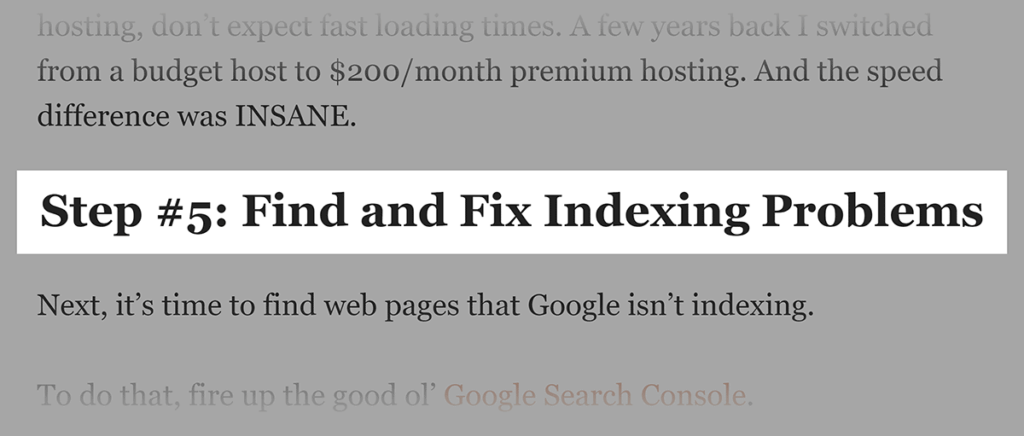
Bullets:
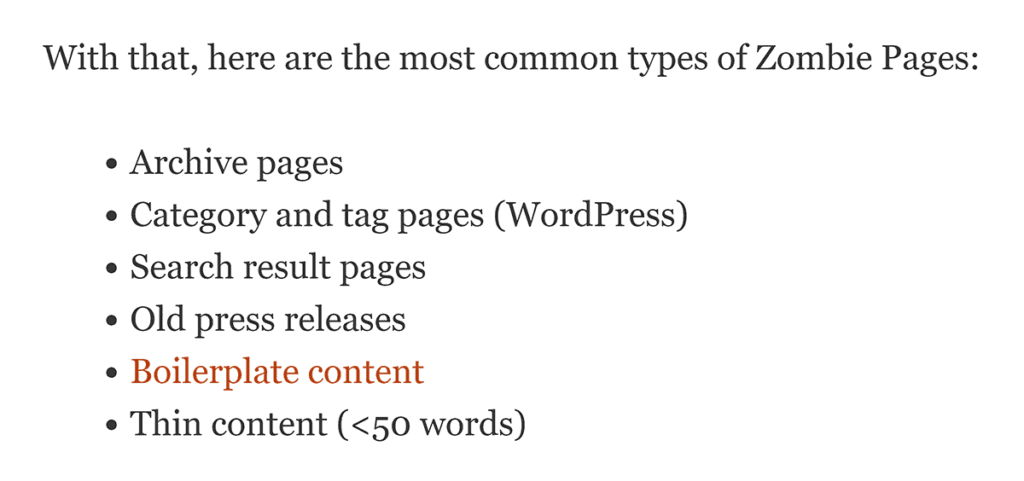
And pictures:
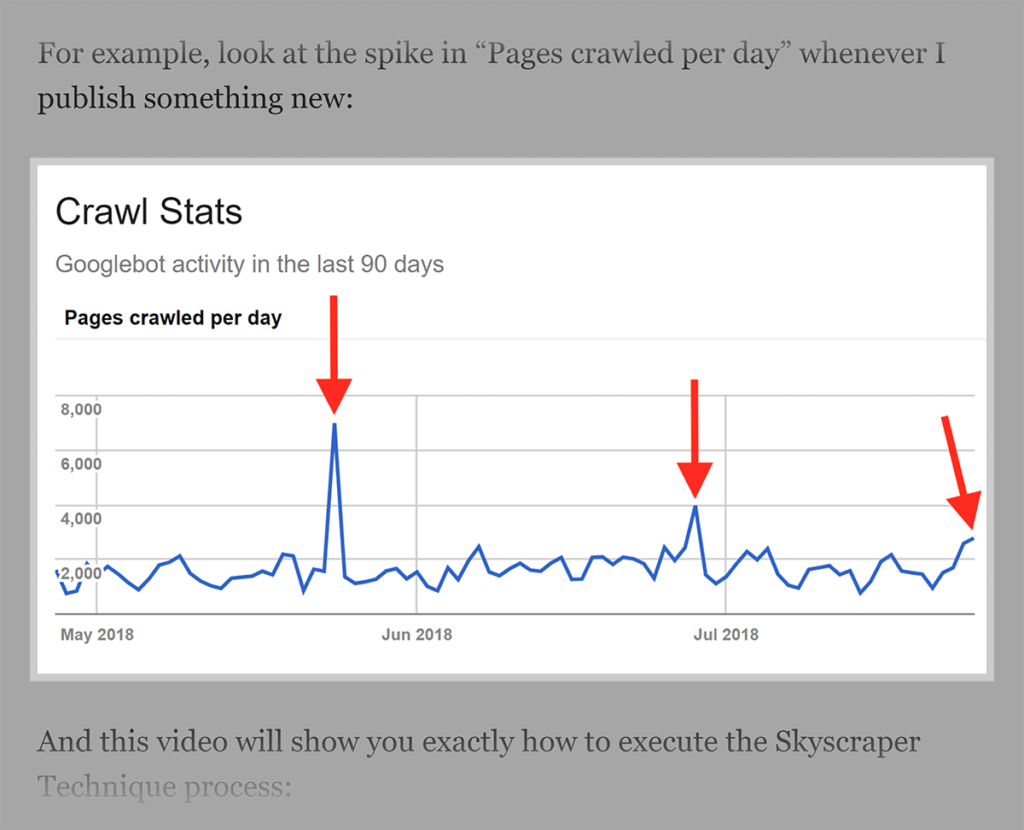
Have an active community
Having a community on your blog is like a bounce rate cheating code.
Why?
The high-quality comments section allows people to read something after reading your article.
This is because comments add context to your article:

Contribute new methods and strategies:
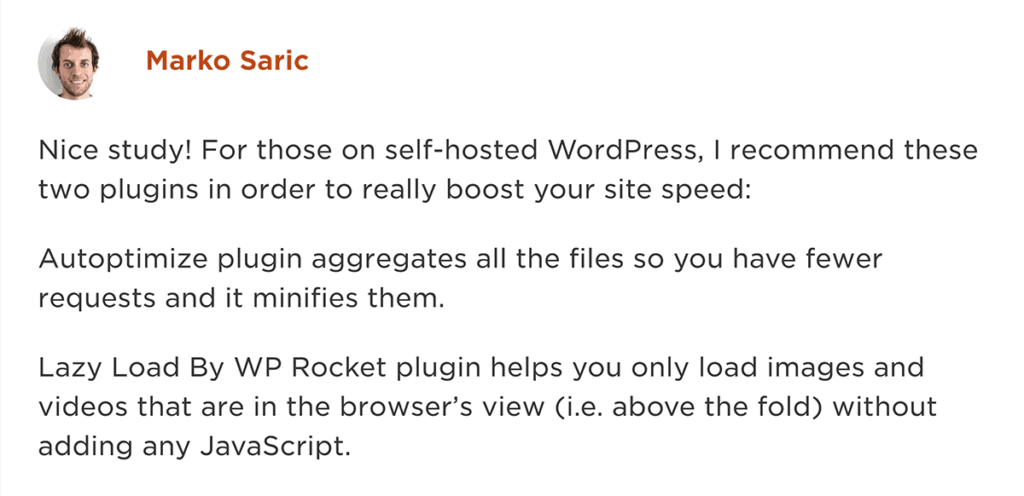
And, sometimes, there is some controversy:

Everything that makes people super glued to your page.
Chapter 7: advanced page search engine optimization techniques

The last chapter lists some of my favorite page search engine optimization techniques.
So, once you’ve optimized the page’s title and H1 tags, here are some tips to help you take the page’s SEO to a new level.
Let’s go straight to strategy.
Use the original image
Do you use stock pictures in your content?
Well, these inventory pictures may damage your SEO.
Shai Aharony recently tested the impact of images on Google’s rankings.
This is what happened.
First, Shai has created a whole new set of websites specifically for these experiments. These are new domain names that have never been registered before.
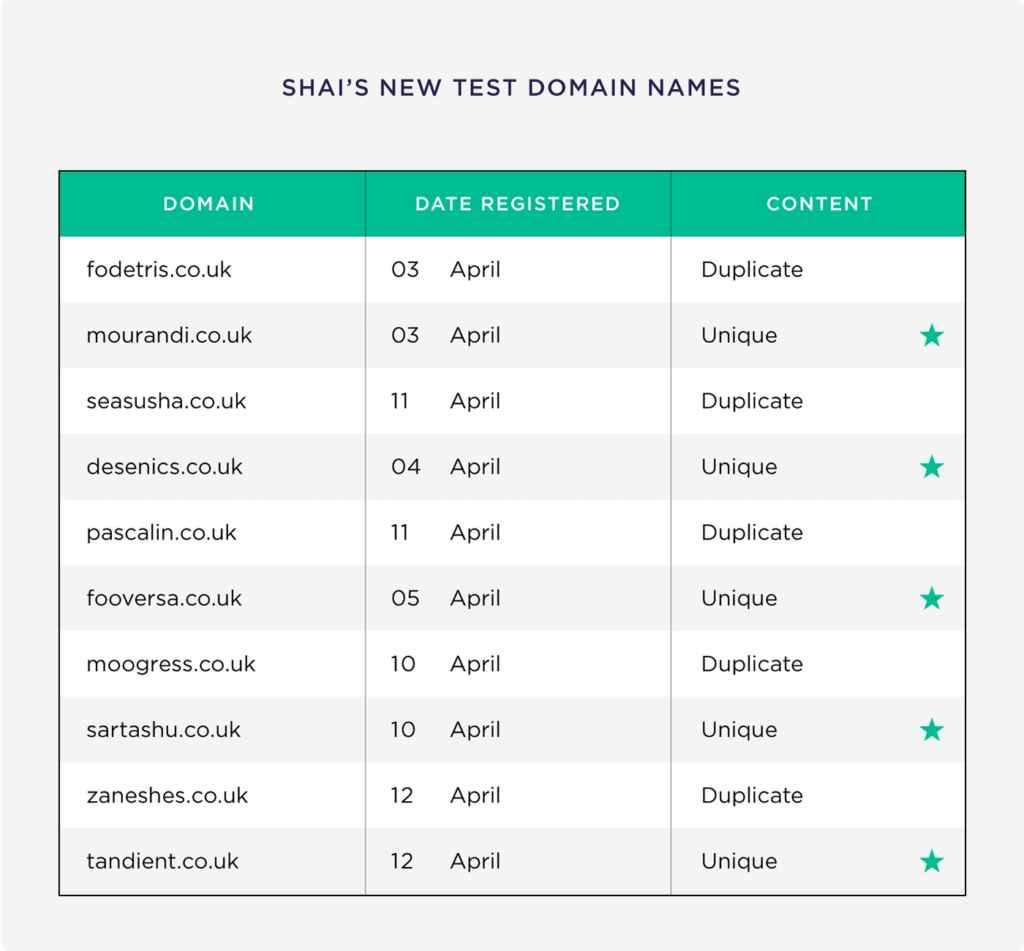
He uses general stock pictures on some websites. And the original images of other people.

The results are clear: sites with unique images rank higher than those that use stock photos.
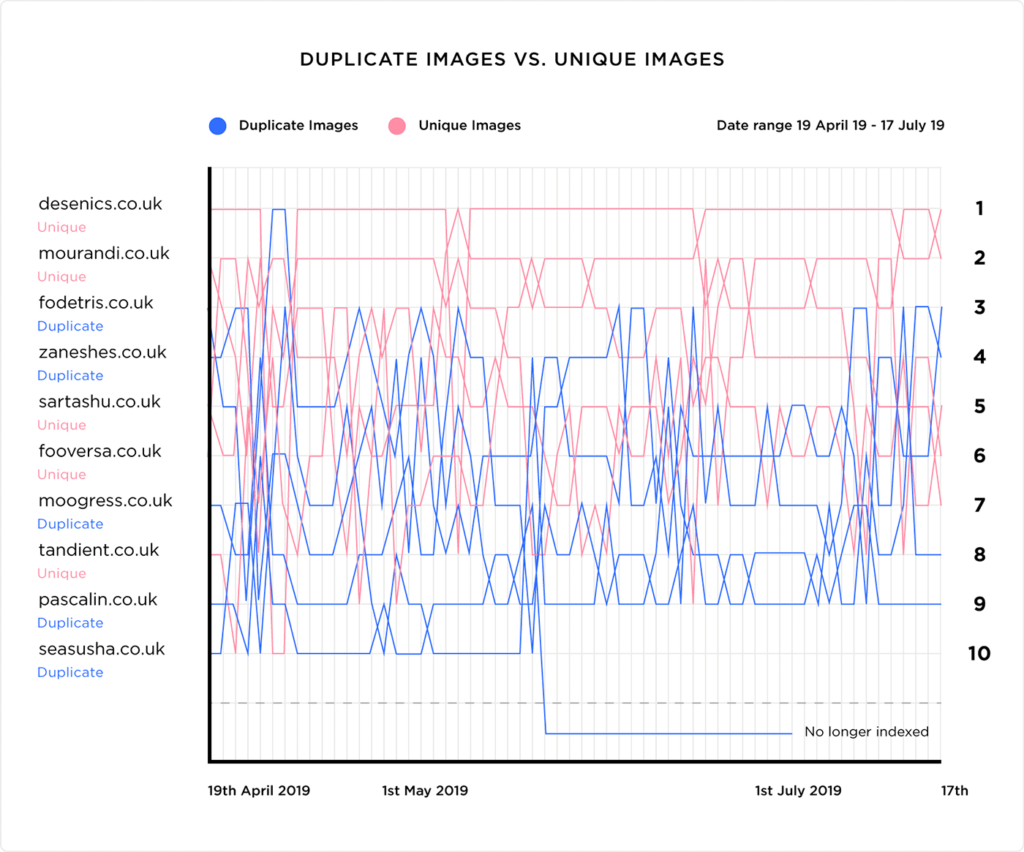
Therefore, if you use stock photos used by a thousand other websites, consider creating custom images.
At least according to this small study, these raw images may help us rank.
Internal link
Internal links are huge for SEO.
Specifically, you want to link from the highly privileged pages on your site to the pages that need to be promoted.
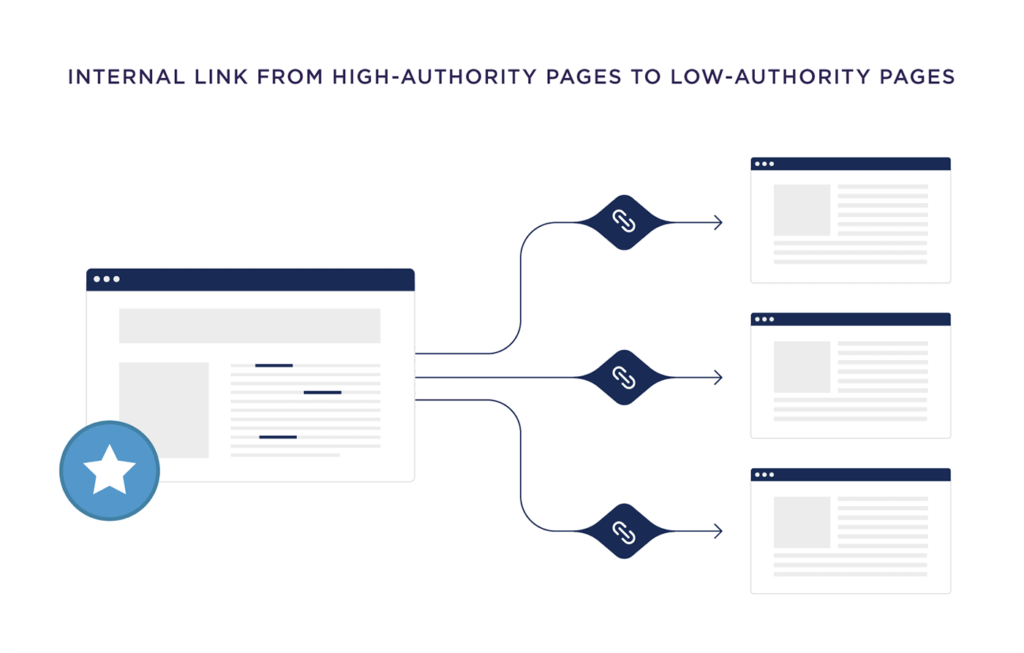
When doing so, be sure to use keyword-rich anchor text. This is an example:
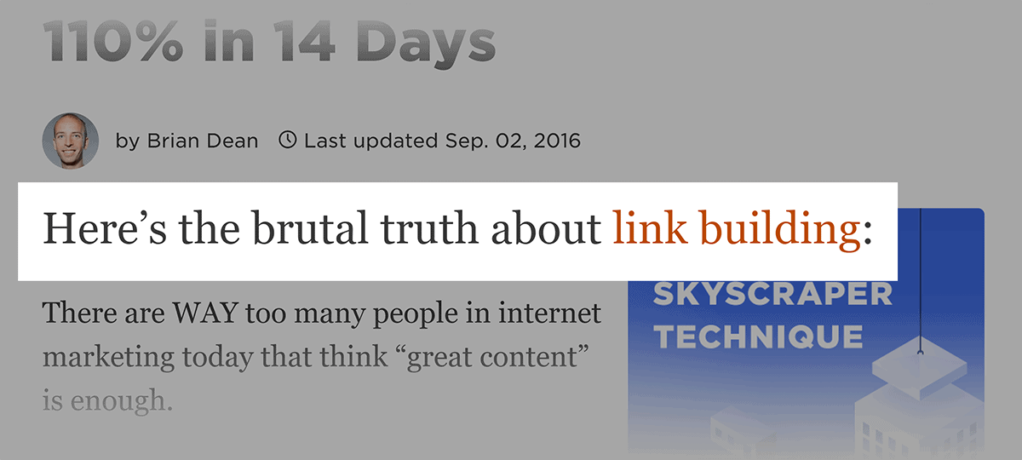
With this, this is the process I use and recommend.
First, use a SEO tool like Semrush and its Index Page report to display the pages on your site that have the most link permissions.
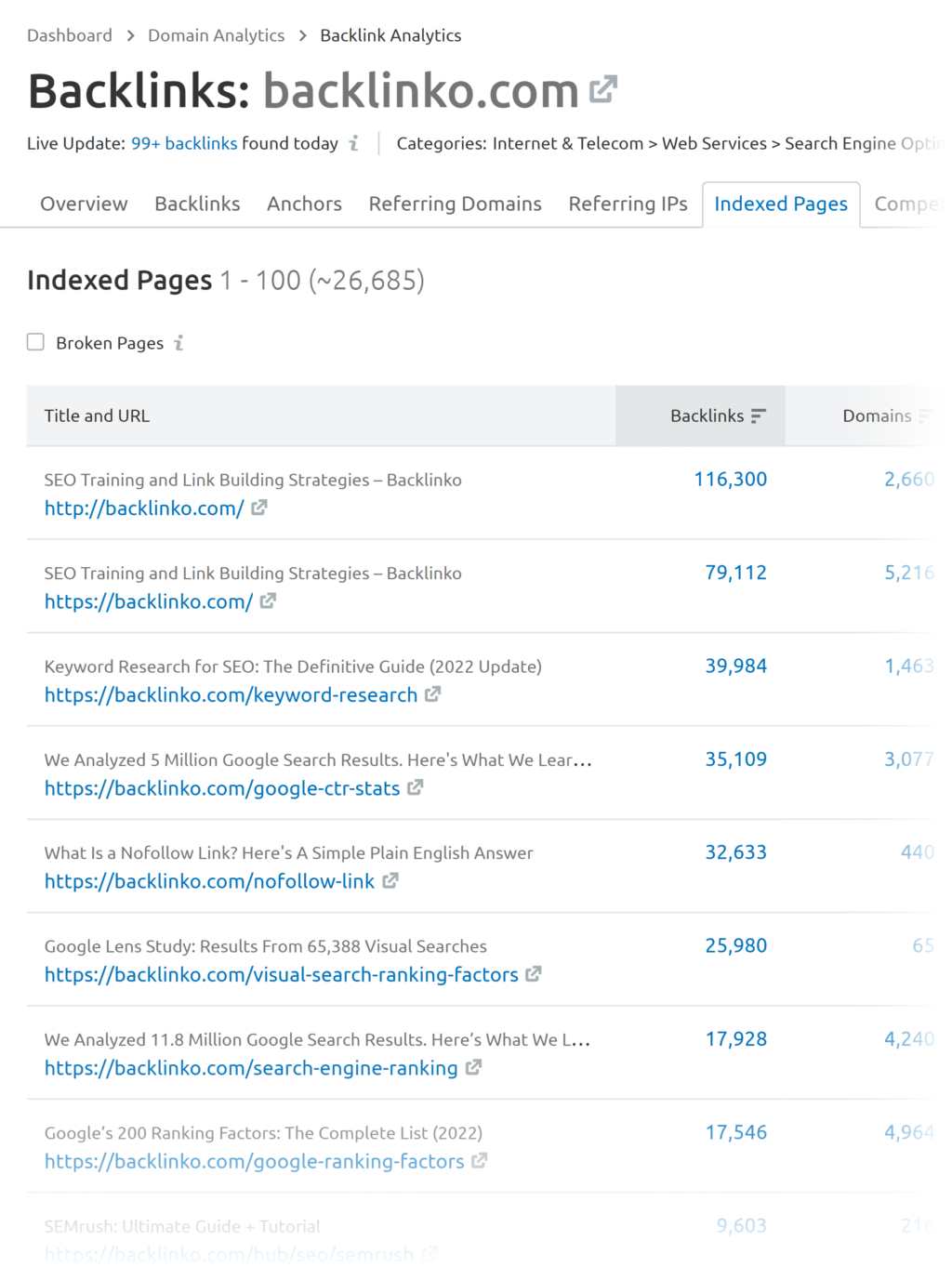
Then, add some internal links to these pages to the high priority pages on your site.
For example, I recently wanted to improve our ranking of WordPress’s ultimate SEO optimization solution.
So I will add an internal link from one of our most authoritative pages to the article in a series of articles.
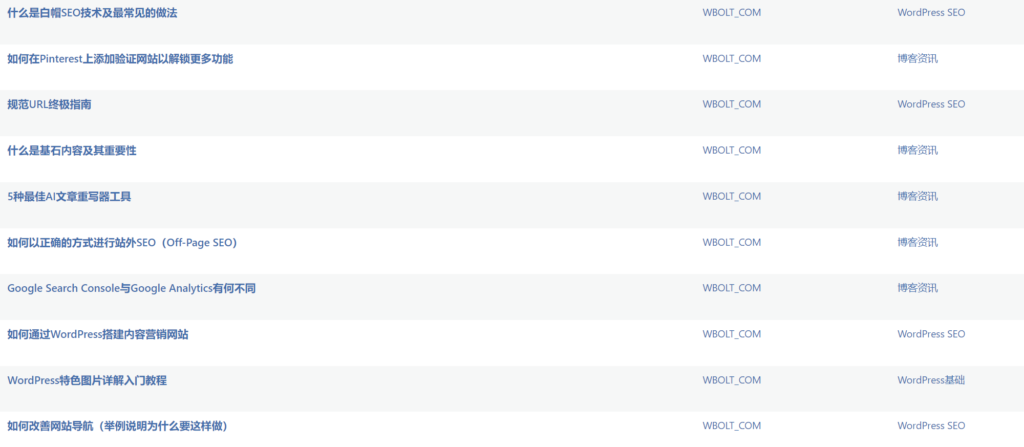
It’s simple.
If you want to see a good example of how to link internally on your site, check out Wikipedia.
They added a large number of keyword-rich internal links to each page:
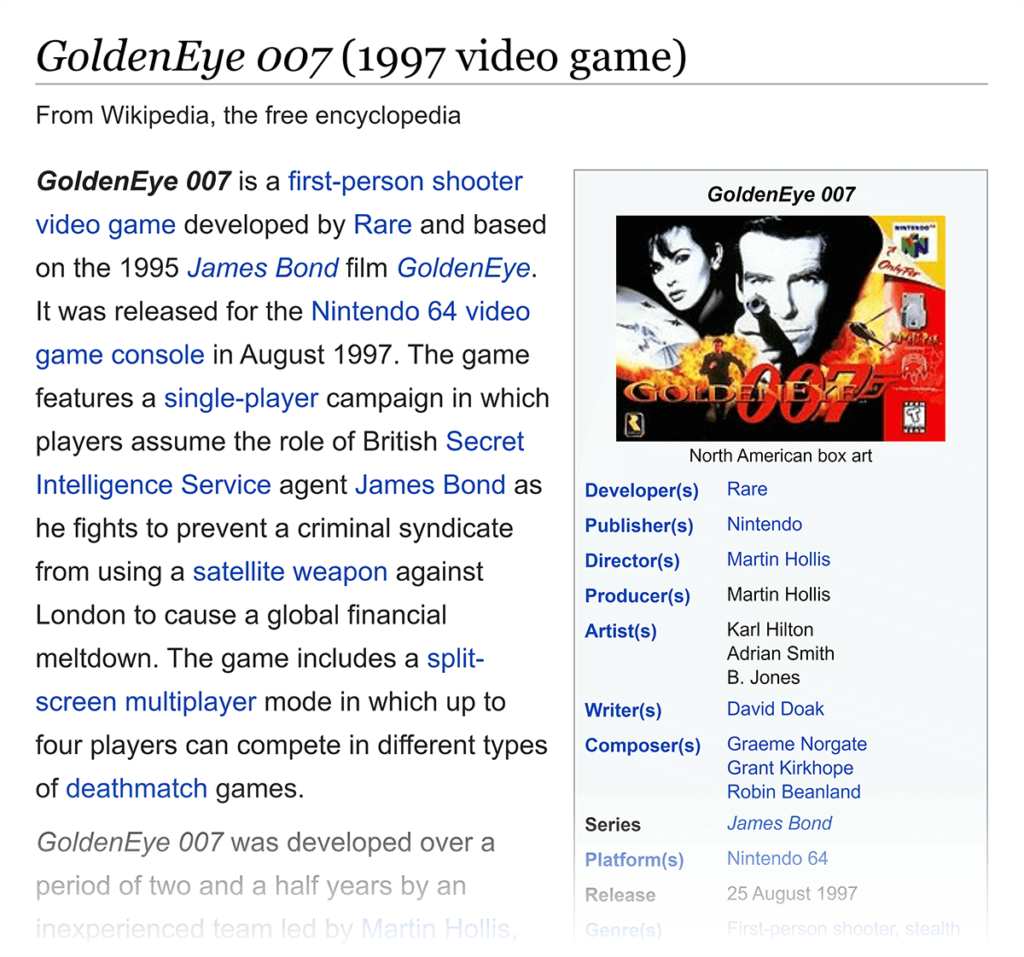
Write comprehensive content
Google wants to show their users everything they want on one page.
In other words: comprehensive content.
If your article covers the entire topic, it has a higher chance of ranking.
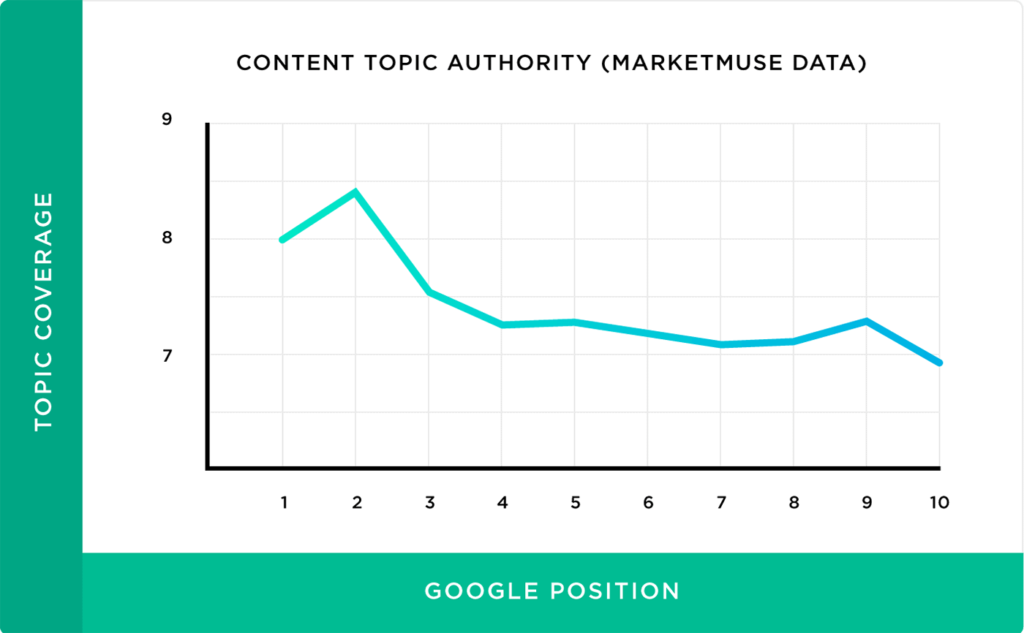
What is one of the easiest ways to ensure that Google sees your content as complete?
LSI keyword.
The LSI keyword is a synonym used by Google to determine page relevance.
I’m not crazy about the LSI keyword, because I usually write very long things.
Long content increases your chances of using the LSI keyword naturally. )
However, if you want to be 100% sure that you are using the LSI keyword, search for your keyword in Google and scroll down to “and …” at the bottom of the page. Related search area:
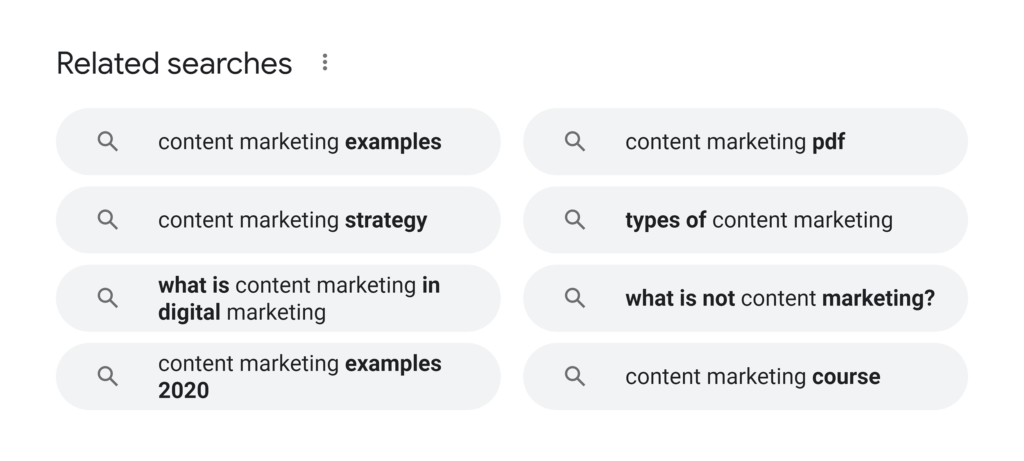
And throw anything meaningful into your article.
Increase your page speed
Google has stated in its records that page loading speed is a SEO ranking signal (they have recently made PageSpeed more important).
According to our analysis of 5.2 million websites, you can improve the loading speed of your site by migrating to a faster host.
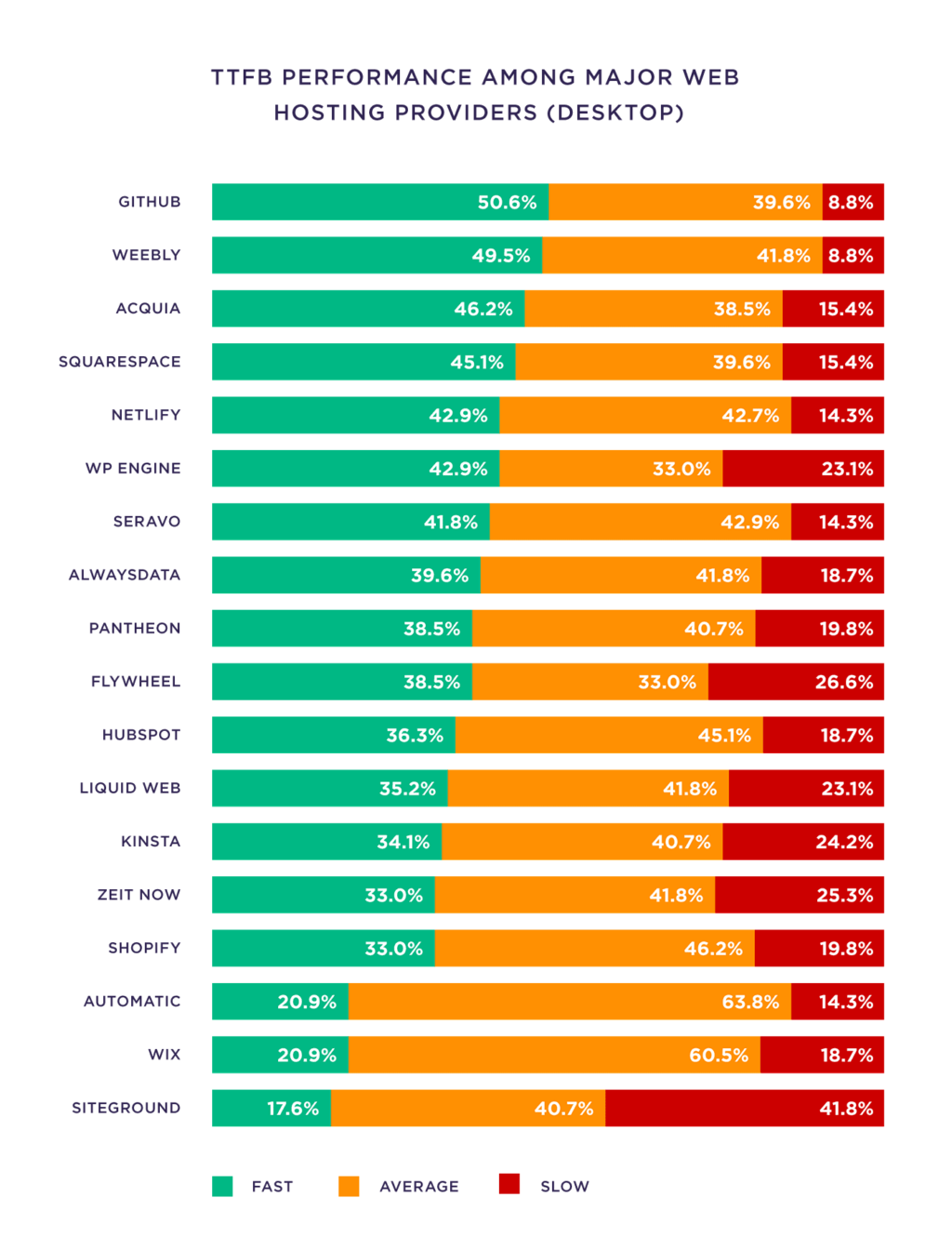
Delete as many third-party scripts as possible.
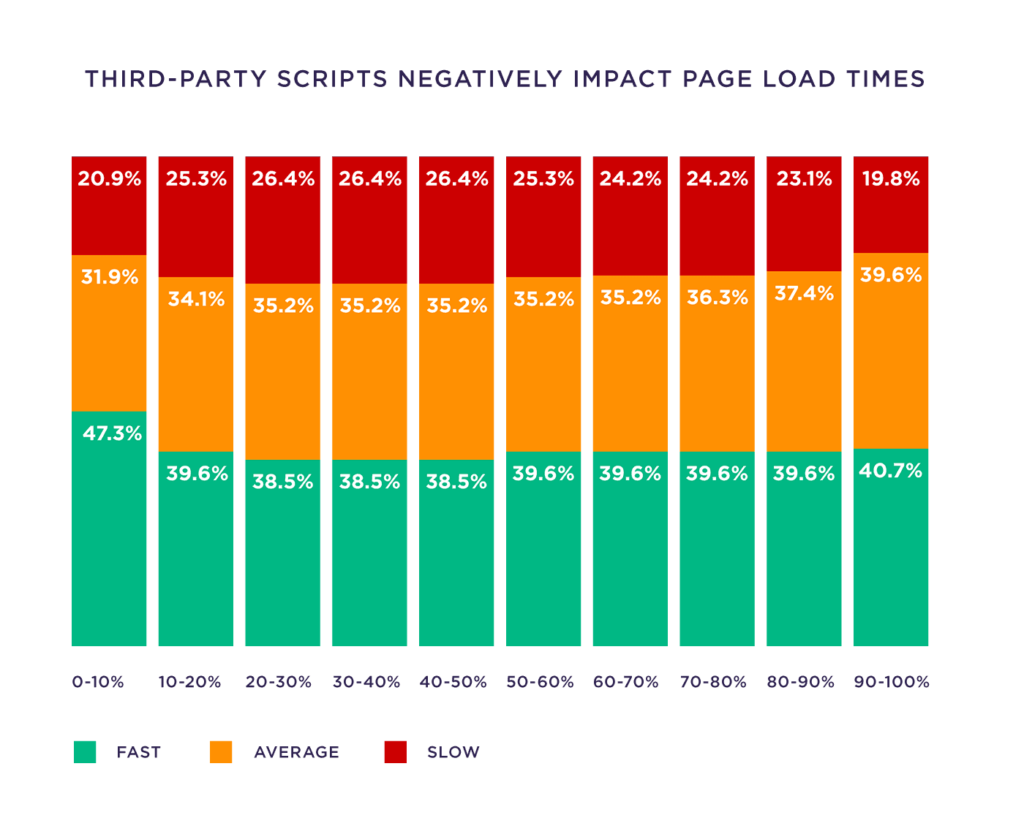
And reduce the total size of the page.

Image optimization
You want to provide a descriptive file name and alternative text for each picture on your website.
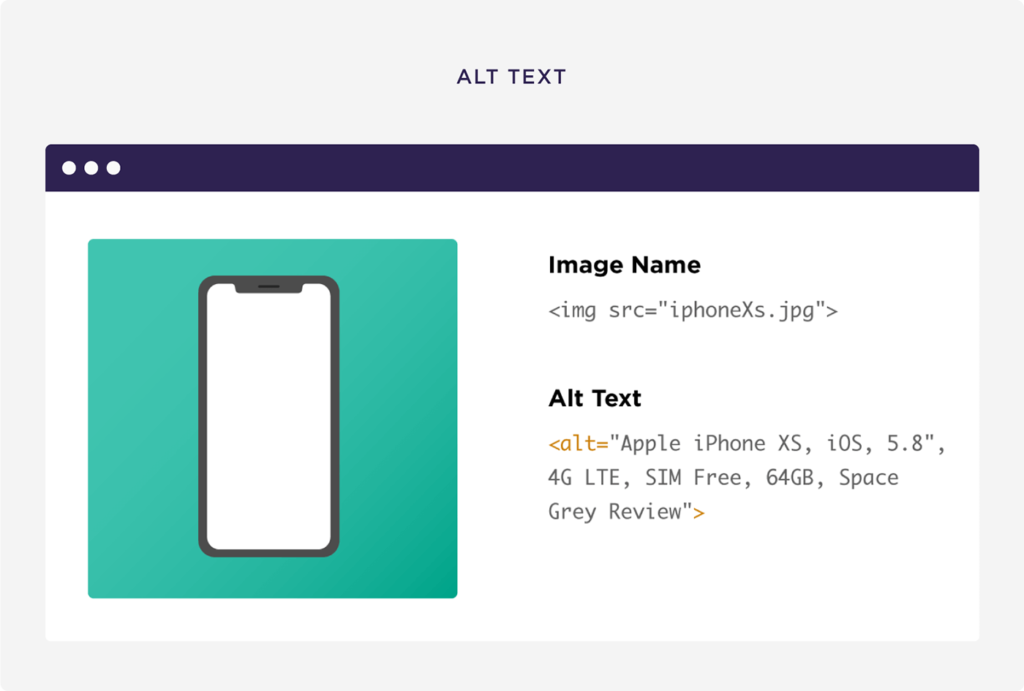
This helps Google (and visually impaired users) understand what each image shows.
If it makes sense, optimize a picture around your target keyword. Therefore, use the file name that contains the target keyword (for example, on-page-seo-chart.png). And use the same keyword as part of the image alt tag.

Another reason to optimize images for SEO: it provides search engines with another clue about the content of your page. This can help it rank higher.
In other words: when Google sees a page with pictures of “blue gadgets” and “green gadgets”, it tells them, “this page is about gadgets.”
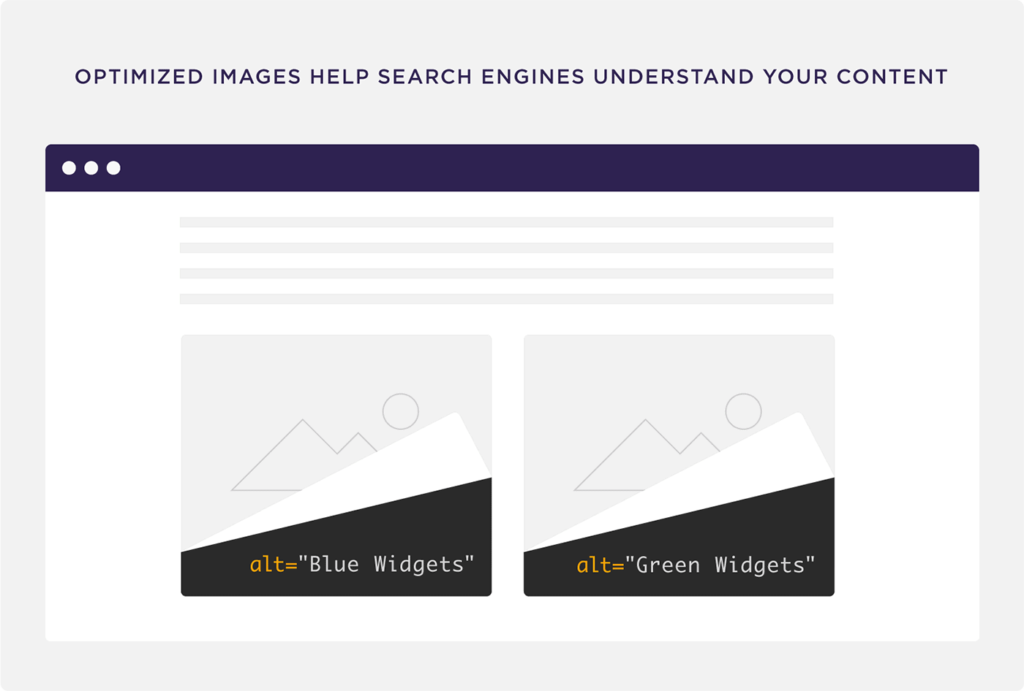
Rank your content in selected clips
Ranking in selected clips can have a huge impact on your click-through rate.
The only harvest?
According to this industry research, you need to be already on the home page to get selected clips.
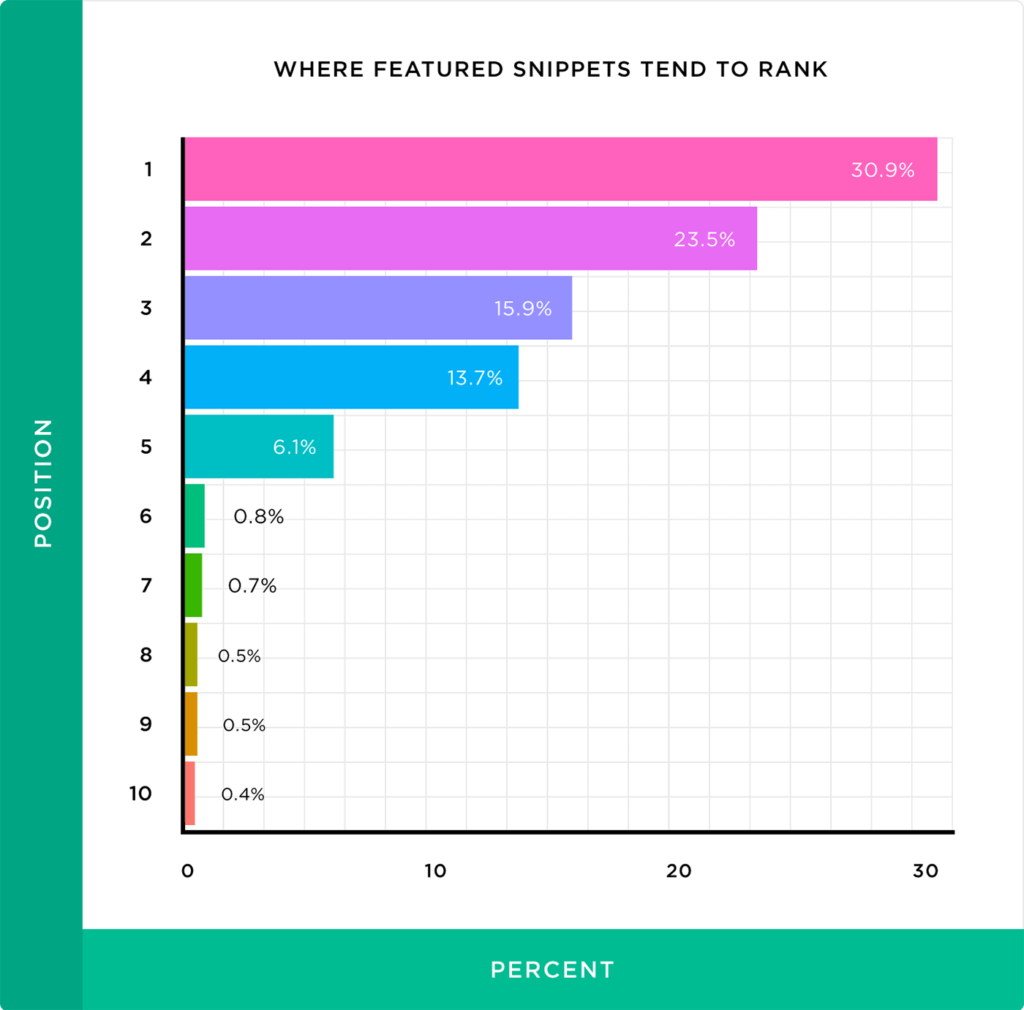
This means that you need to find the home page results that have selected clips and for which you rank.
Find them to open SEMrush or any SEO software you use.
And find the page on the first page of Google from your website.
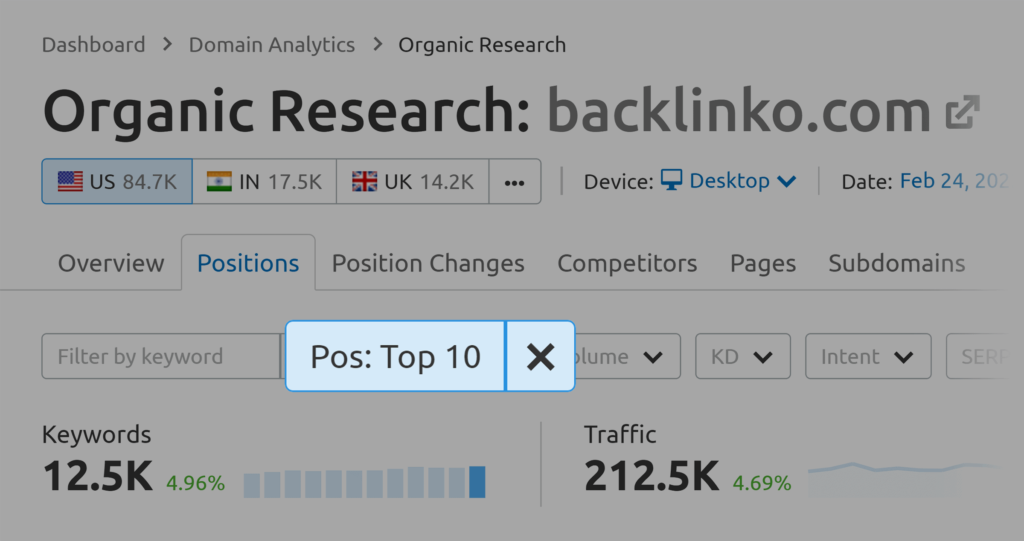
Then, filter the keywords that already have selected clips.
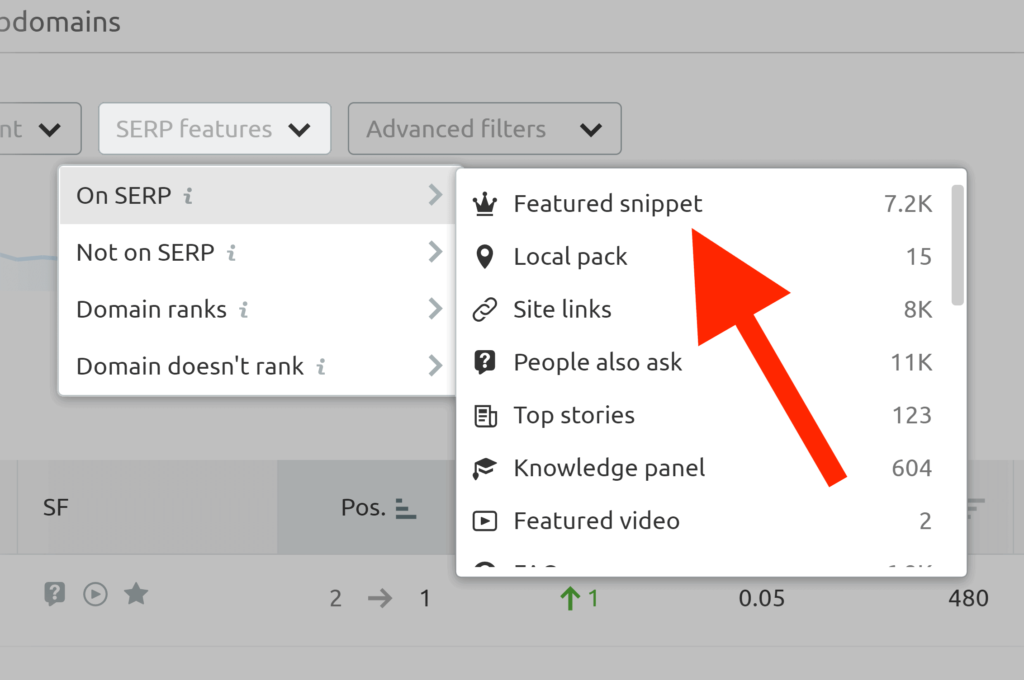
Then, look at the selected snippet of each term in Google.
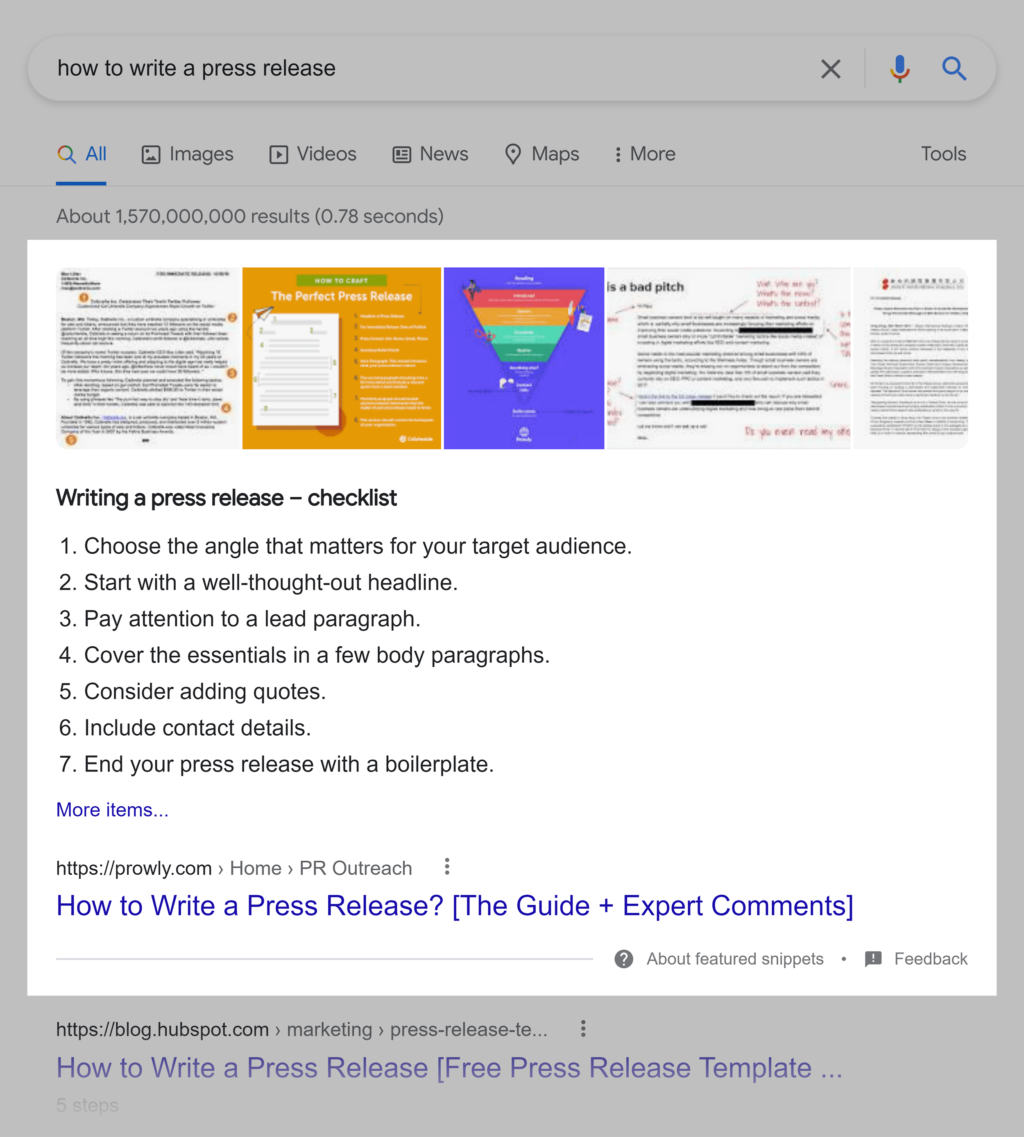
Finally, you need to optimize your content to rank among selected clips.
Therefore, if you see a selection of Definitions, you want to include a short definition in your content.
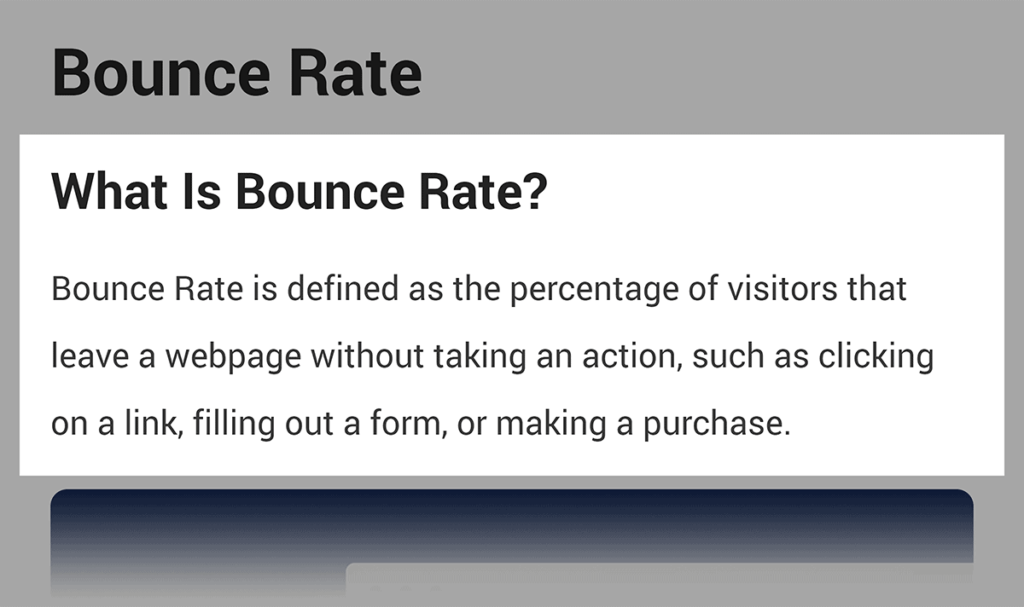
If it is a list of steps or tips, make sure that your page structure is consistent.
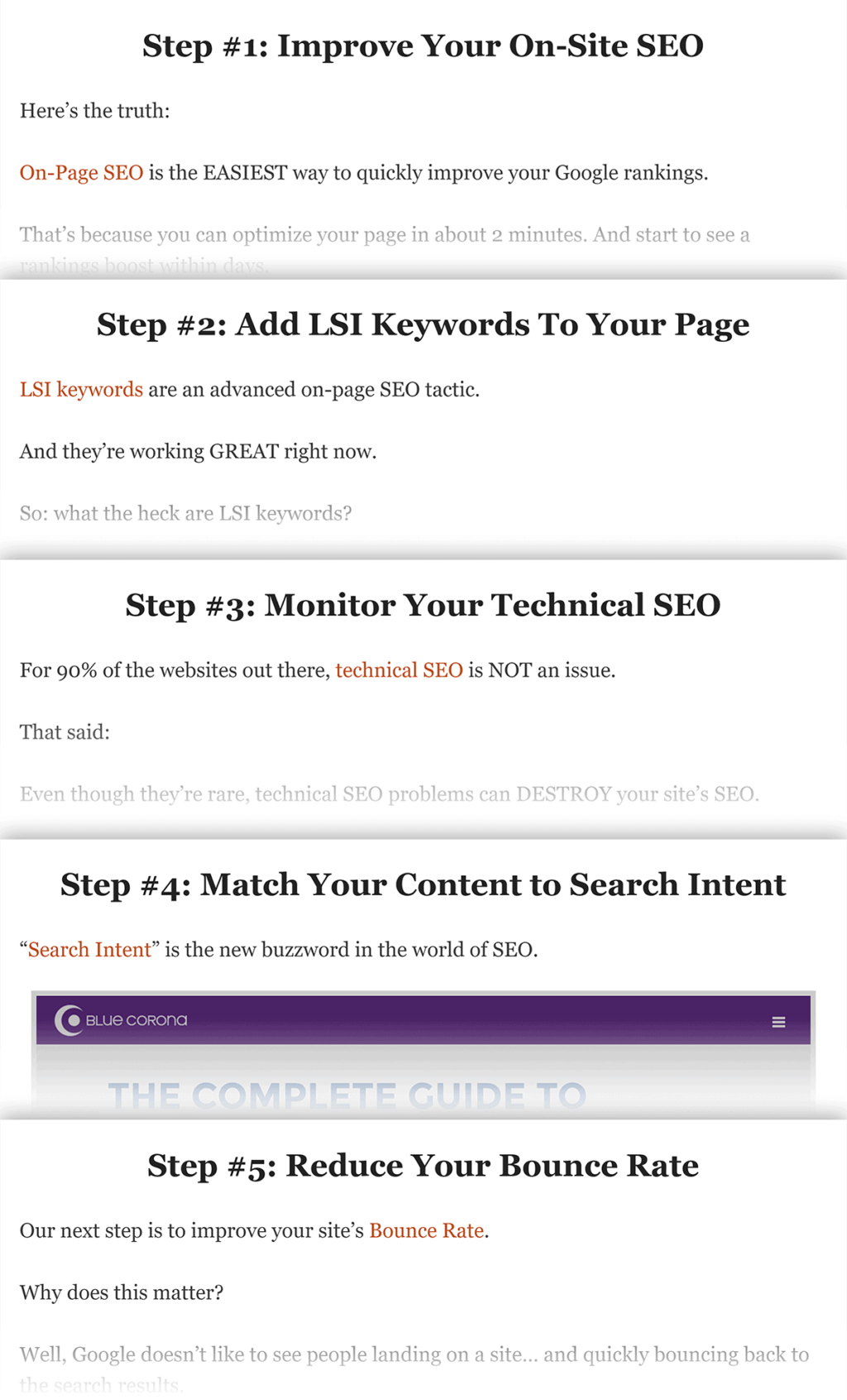
Voice search SEO
Voice search is growing rapidly.
What is the best way to optimize voice search content?
Create a FAQ page.
Our Voice search SEO study found that Google likes to extract voice search results from FAQ pages.
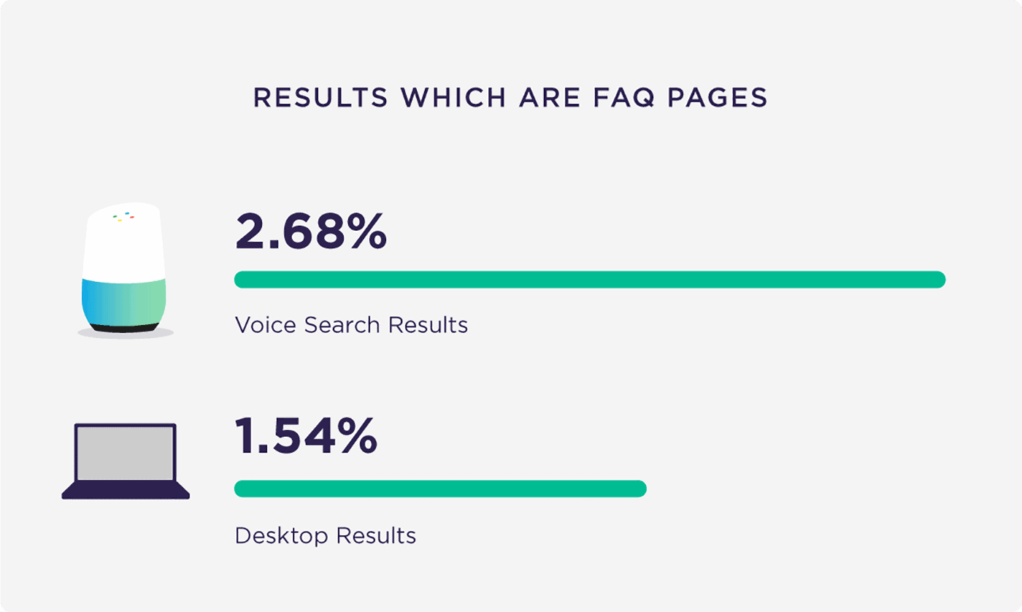
Summary
Mastering on-page SEO is essential for anyone looking for online success.
You can improve your SEO game by optimizing title tags, meta-descriptions, content, URL, links, and other elements.
As we often say, SEO is a continuous journey; it is important to keep abreast of industry changes.
As you implement these strategies and constantly improve your approach, you will see your site climb in search engine rankings, attract more visitors, and provide real value to your audience.

